MAY WILDFLOWERS
5/22/20
April’s flowers have given way to a largely different set of flowers. Rural roadsides in Georgia are spectacular this time of year.
Several of the flowers from April are still doing well, including Dandelion, Little Hop Clover, and Mock Strawberry. Others from April are now quickly fading, like Tuliptree, Field Madder, Oriental False Hawksbeard, Small’s Ragwort, and Chinese Privet.
Southern Magnolia (Magnolia grandiflora)
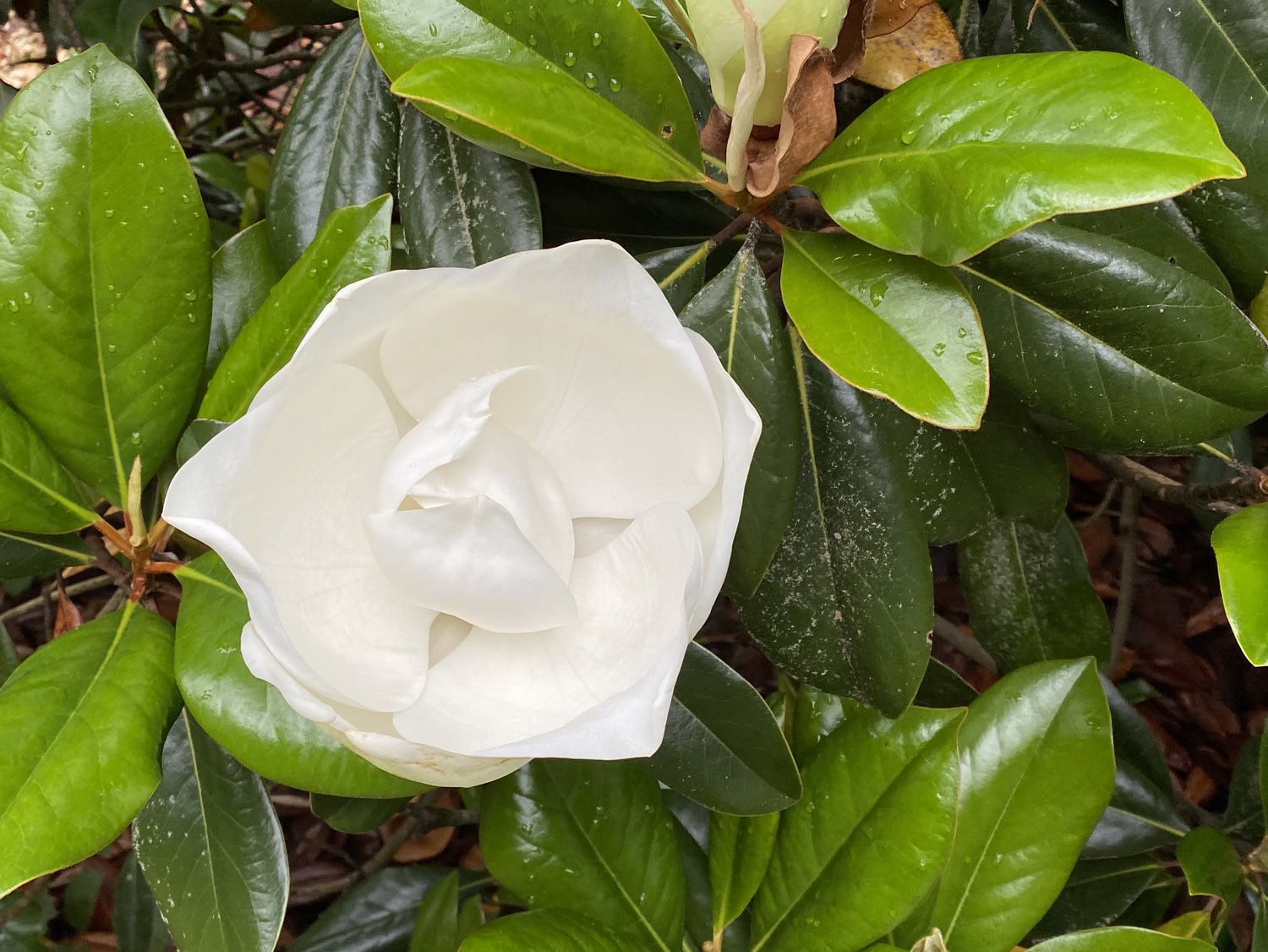
Field Madder (Galium sherardia). Although a few of the tiny blooms of Field Madder remain (right side of photo), most of it has gone to seed, making these little puffs all over the lawn.
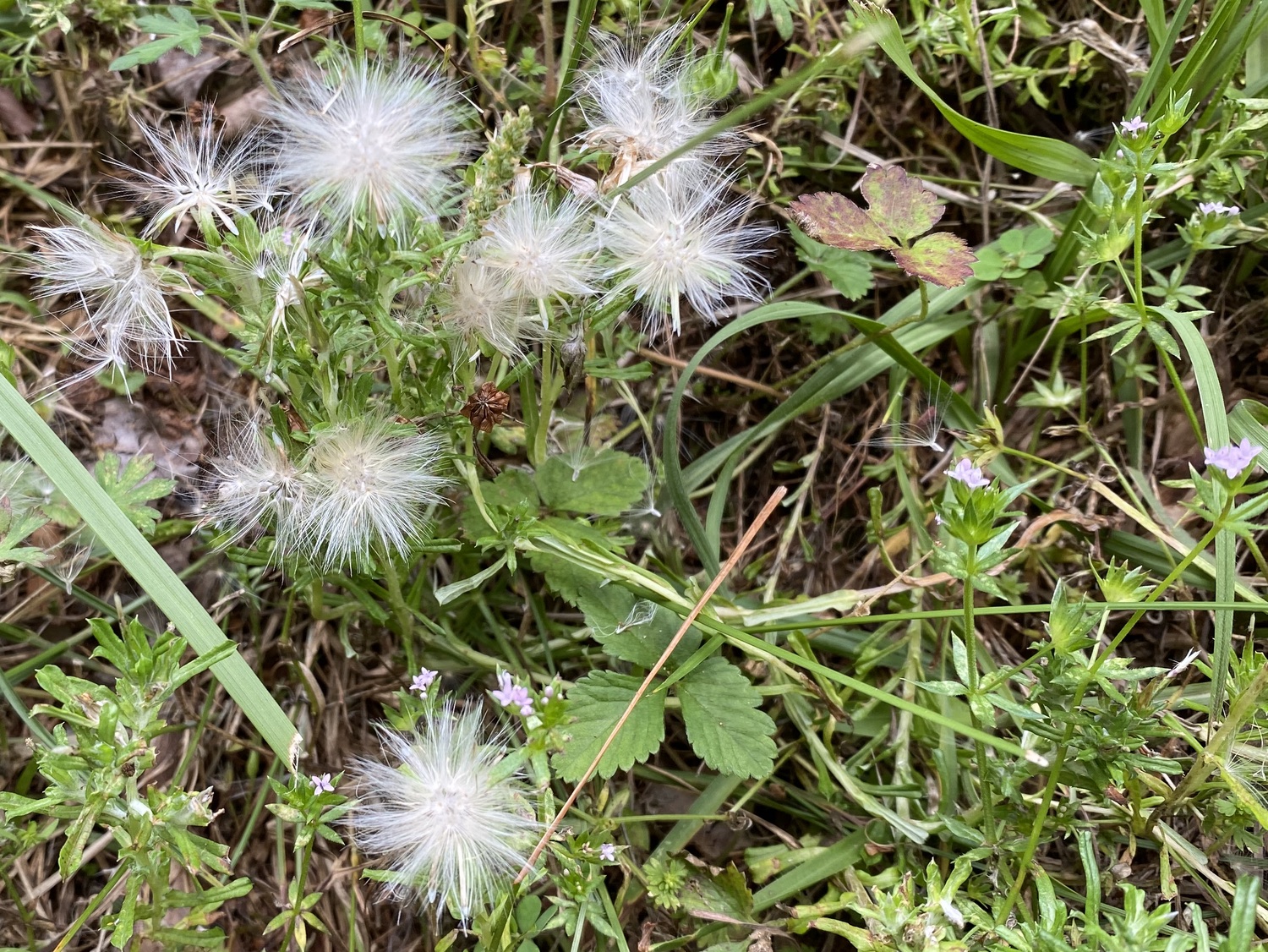
Cat’s Ear (Hyopchaeris radicata, also called False Dandelion). These superficially look like Dandelions, with yellow flowers, but the flower stems are solid, branch, and lack the milky sap of Dandelions. The leaves are lobed, although the leaves are hard to find in the upper photo. Native Plants of the Carolinas & Georgia has a good guide to Dandelion mimics.
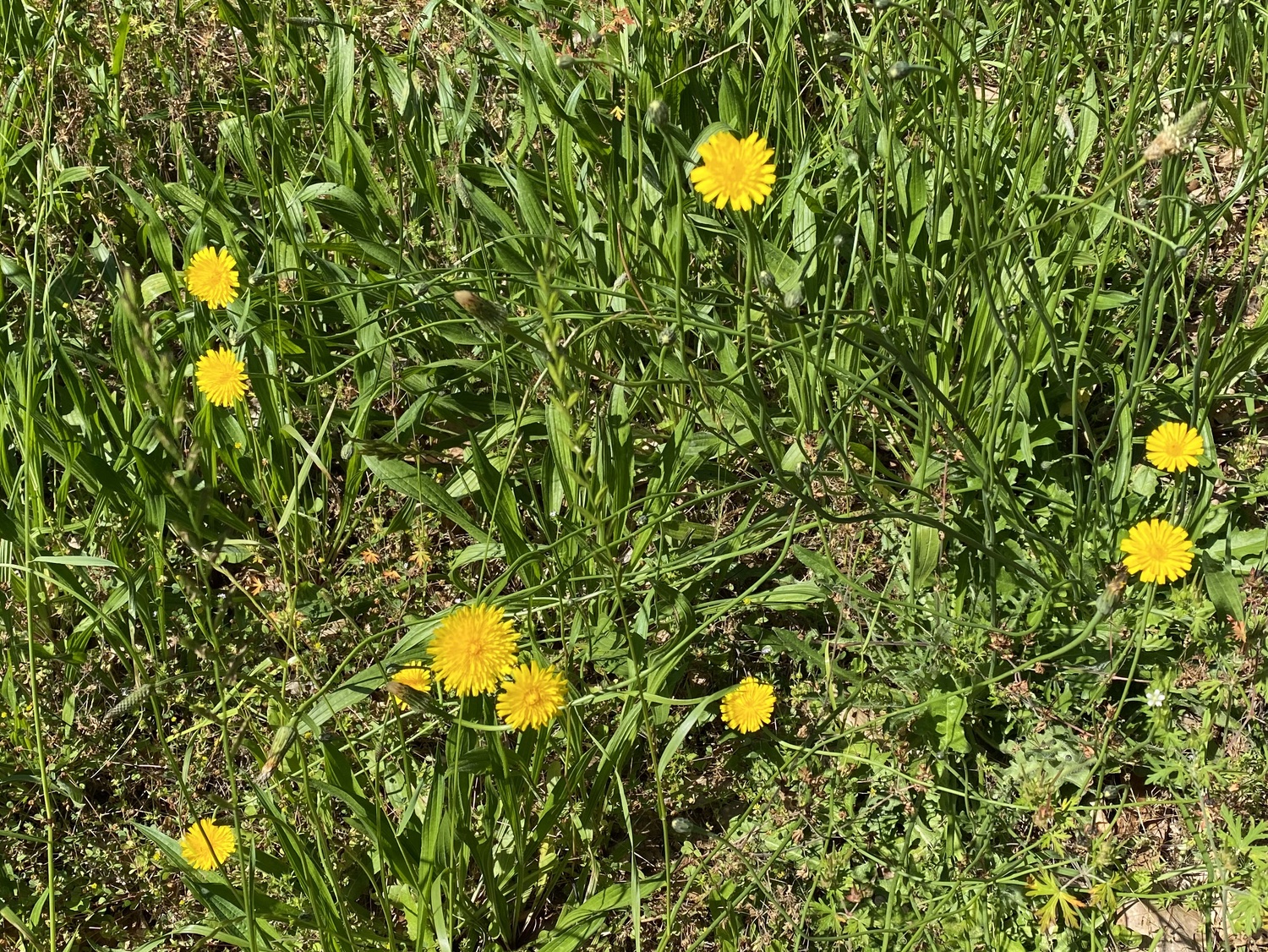
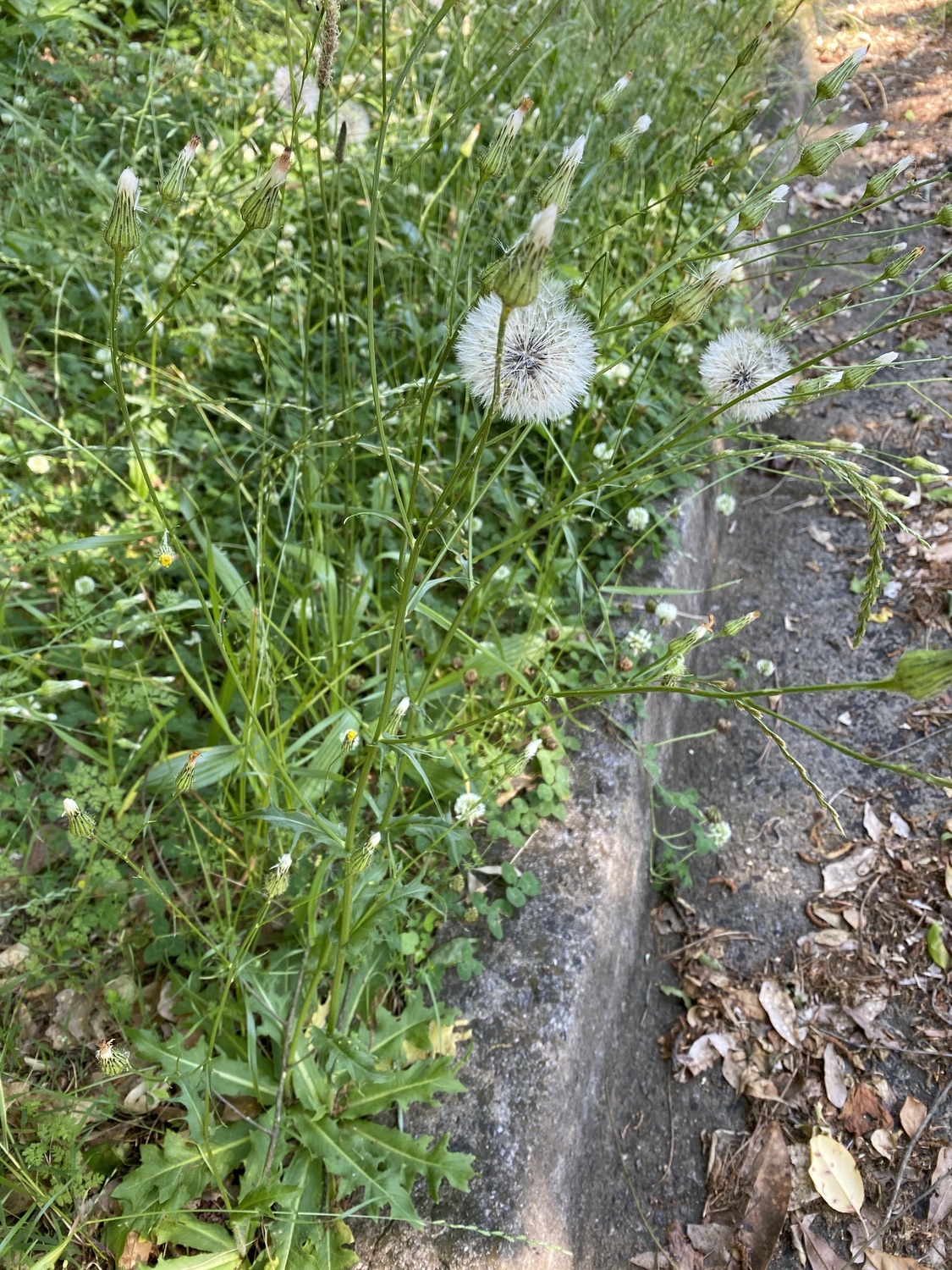
Queen Anne’s Lace (Daucus carota). Queen Anne’s Lace can be distinguished from the similar Poison Hemlock (Conium maculatum) by the its hairy stems that lack purple blotches and by several other features. The difference matters because Queen Anne’s Lace can be eaten (it is also called Wild Carrot), but Poison Hemlock, is as you might guess, poisonous. Queen Anne’s Lace is naturalized from Europe and Asia.
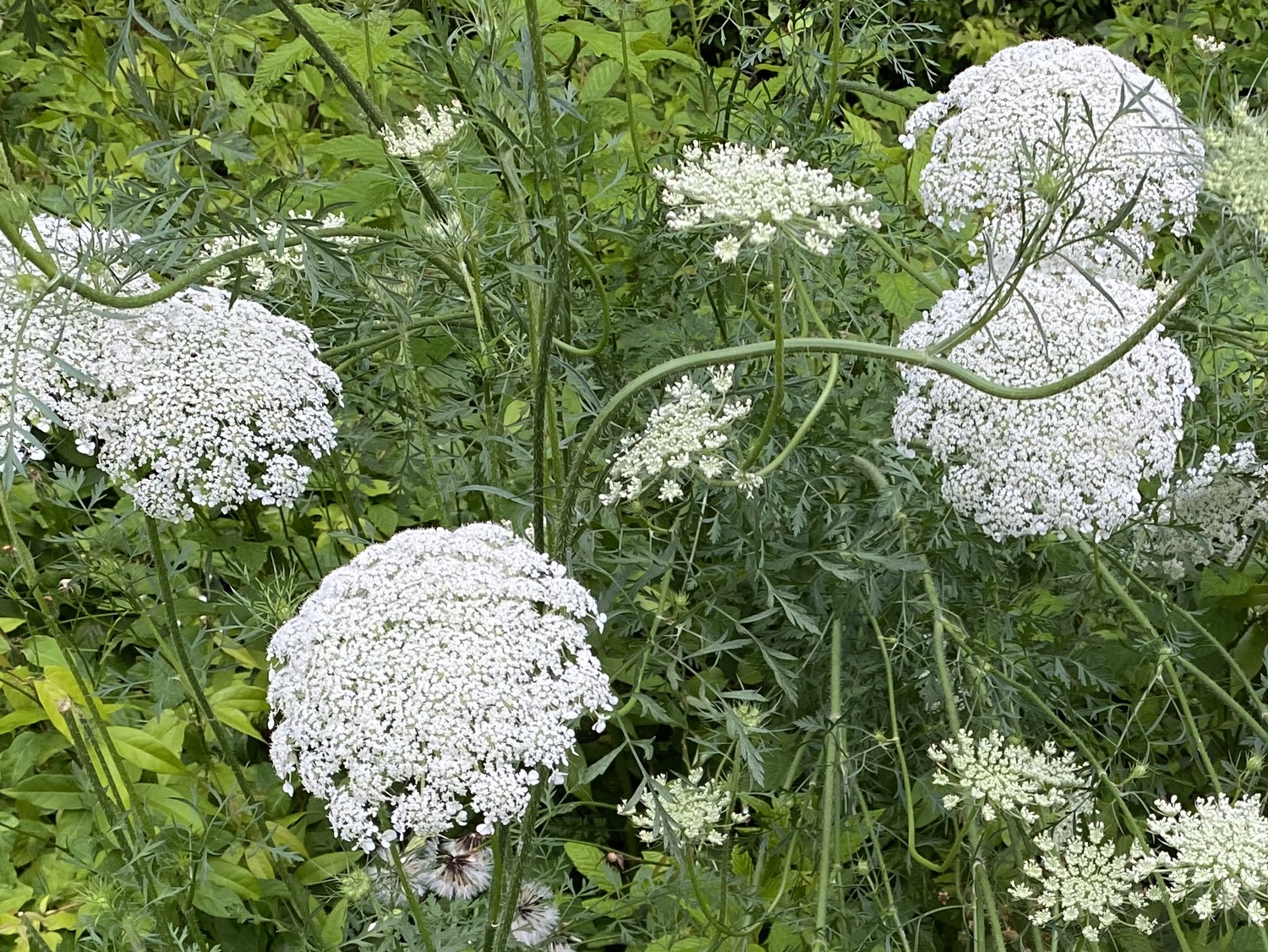
White Clover (Trifolium repens). Everyone who doesn’t have a lawn service has a yard filled with White Clover.
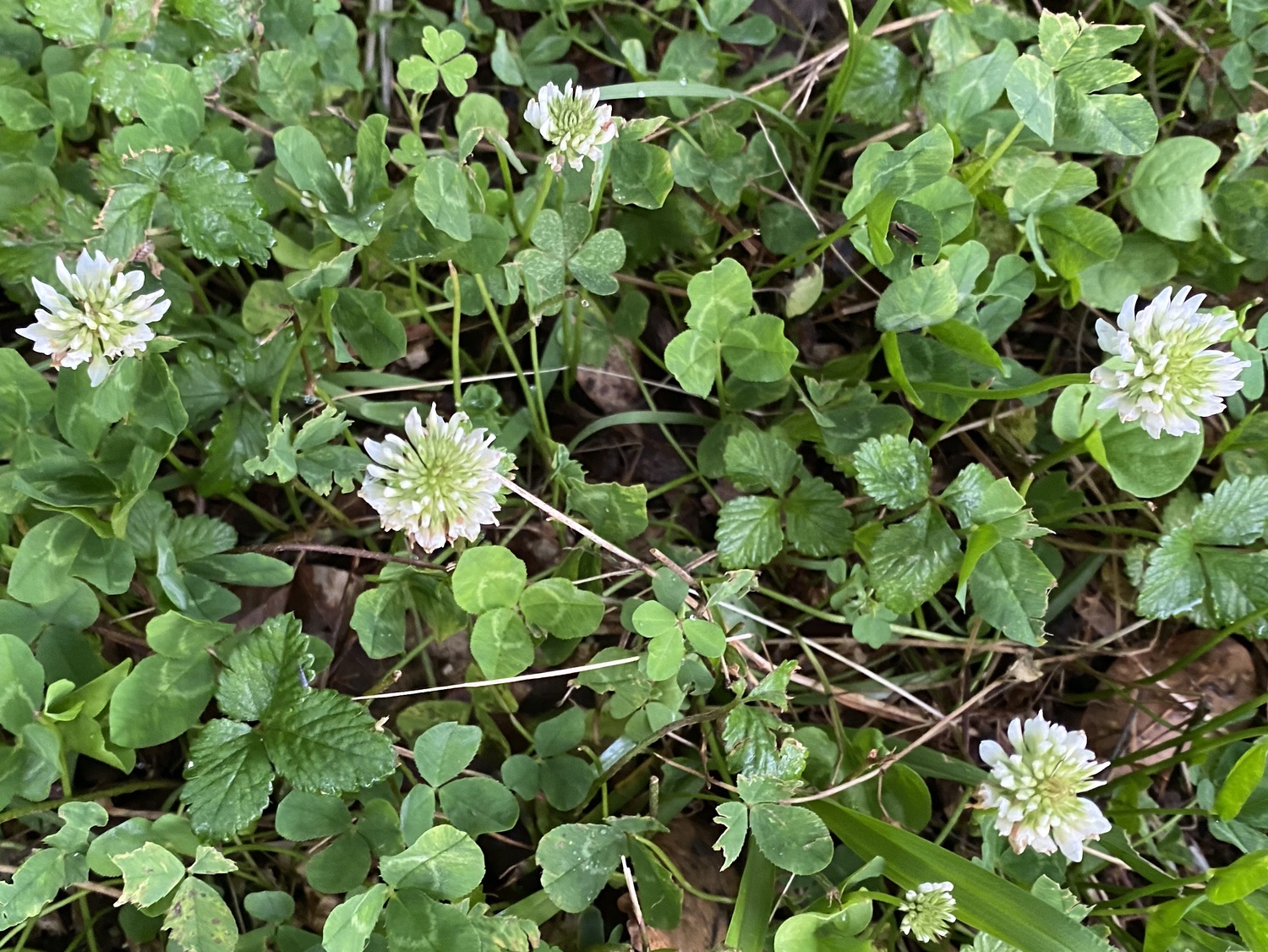
Carolina Horsenettle (Solanum carolinense). Later this summer, this will get marble-sized tomato-like fruits. They’re poisonous: Solanum is in the nightshade family (Solanaceae). These are growing in a disturbed area along the road across from our house.
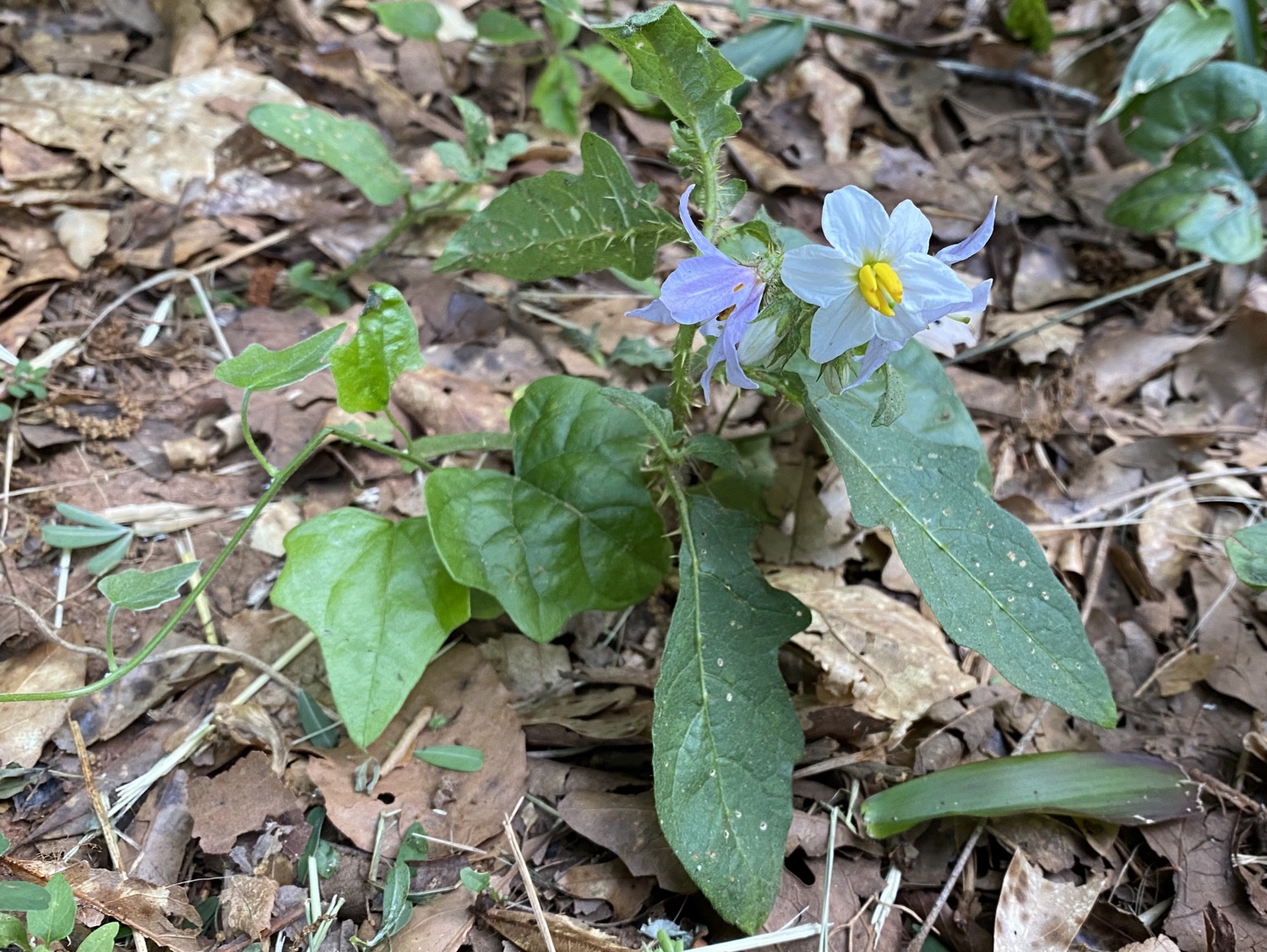
Dog Fennel (Eupatorium capillifolium). It’s not flowering, but this is a common weed in disturbed areas that comes up in May. It smells like licorice when the leaves are crushed.
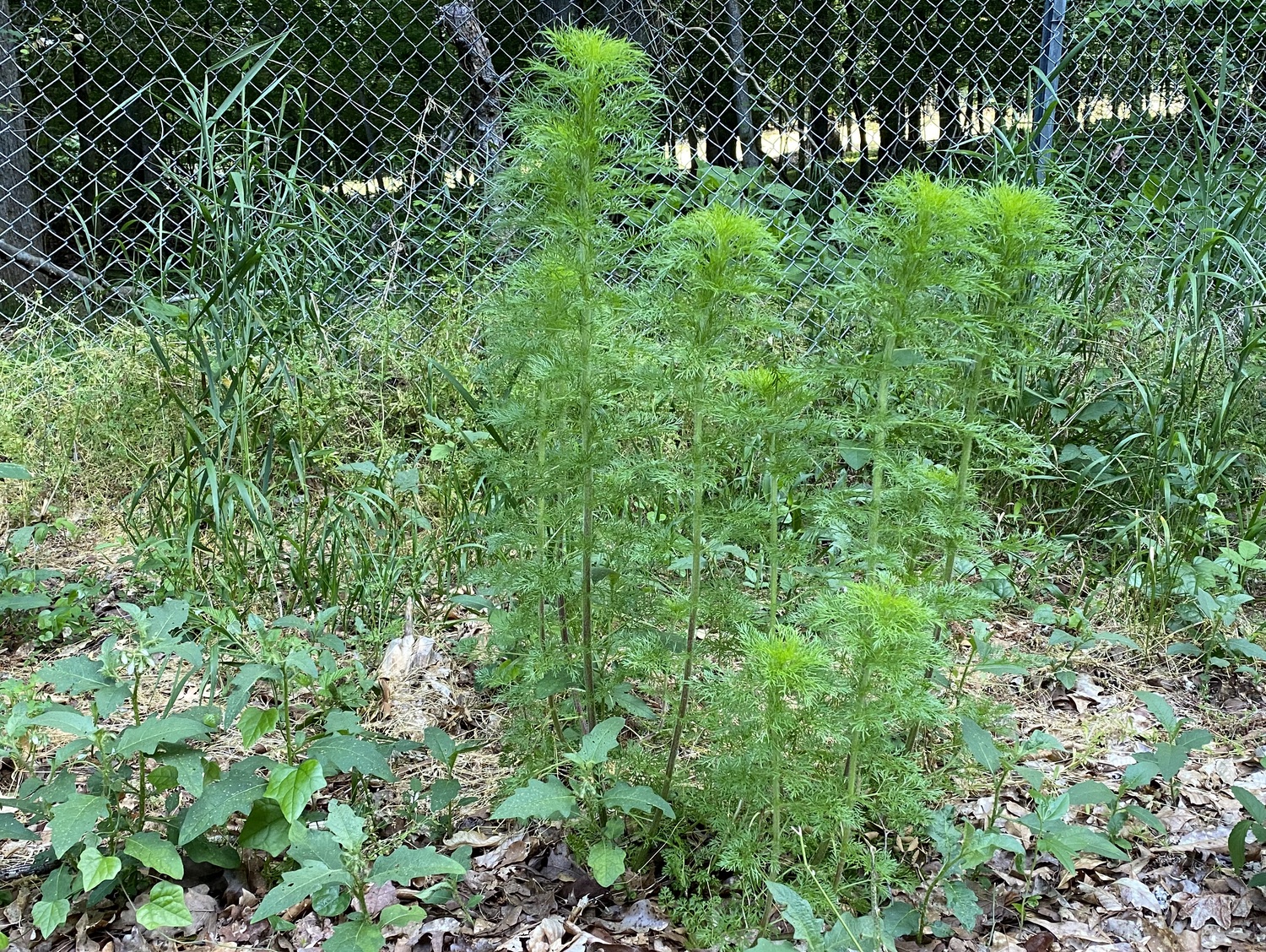
American Pokeweed (Phytolacca americana). This is another non-flowering plant coming up now. It is tall with large elliptical leaves and a reddish hollow stem. It blooms with white flowers in early June, which produce small poisonous purple fruits on a raceme later in the summer.
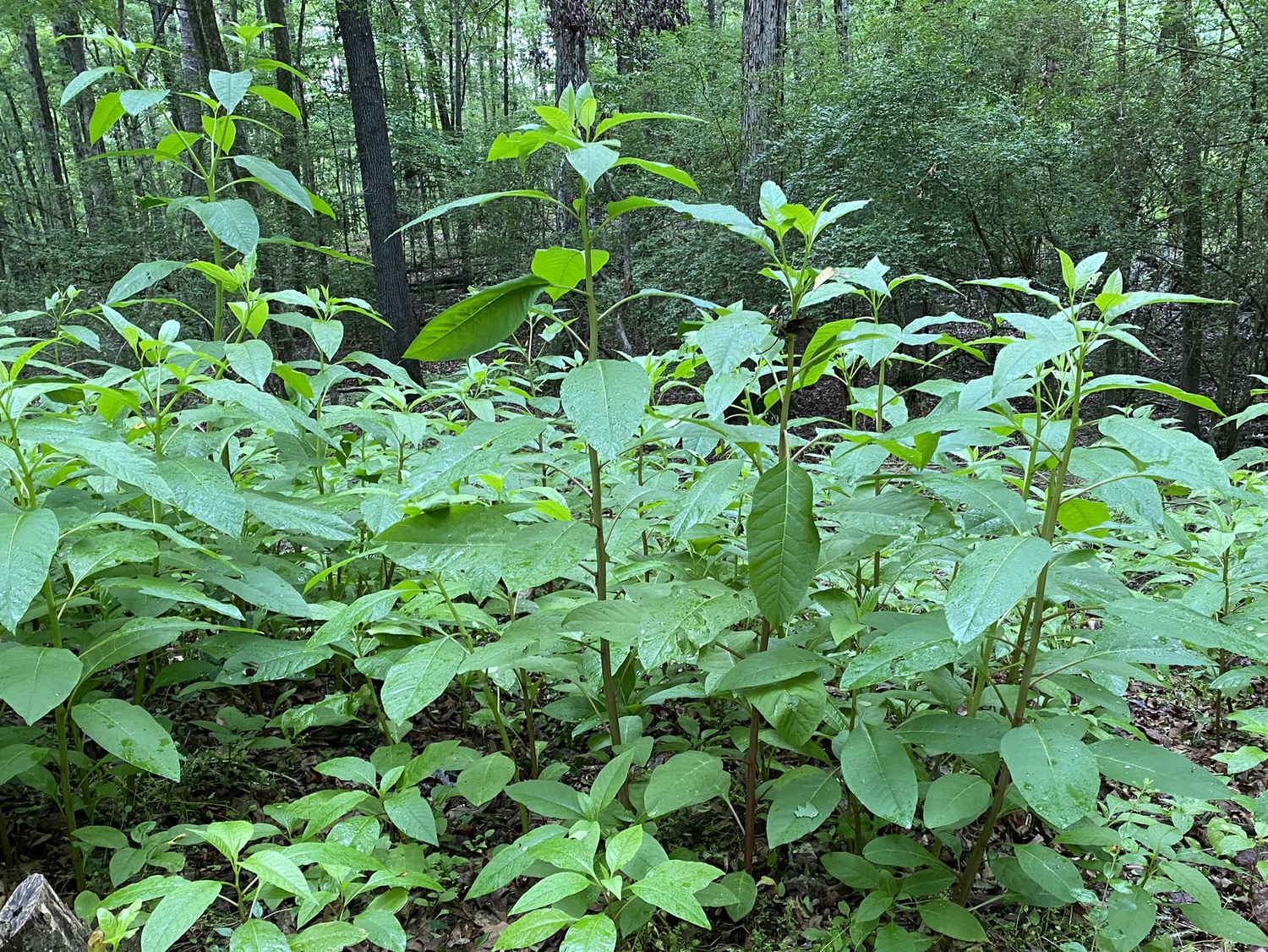
Bull Thistle (Cirsium horridulum, also called Bristly Thistle and Spiny Thistle). The flower color varies widely, from white, yellow, pink, to reddish-purple.
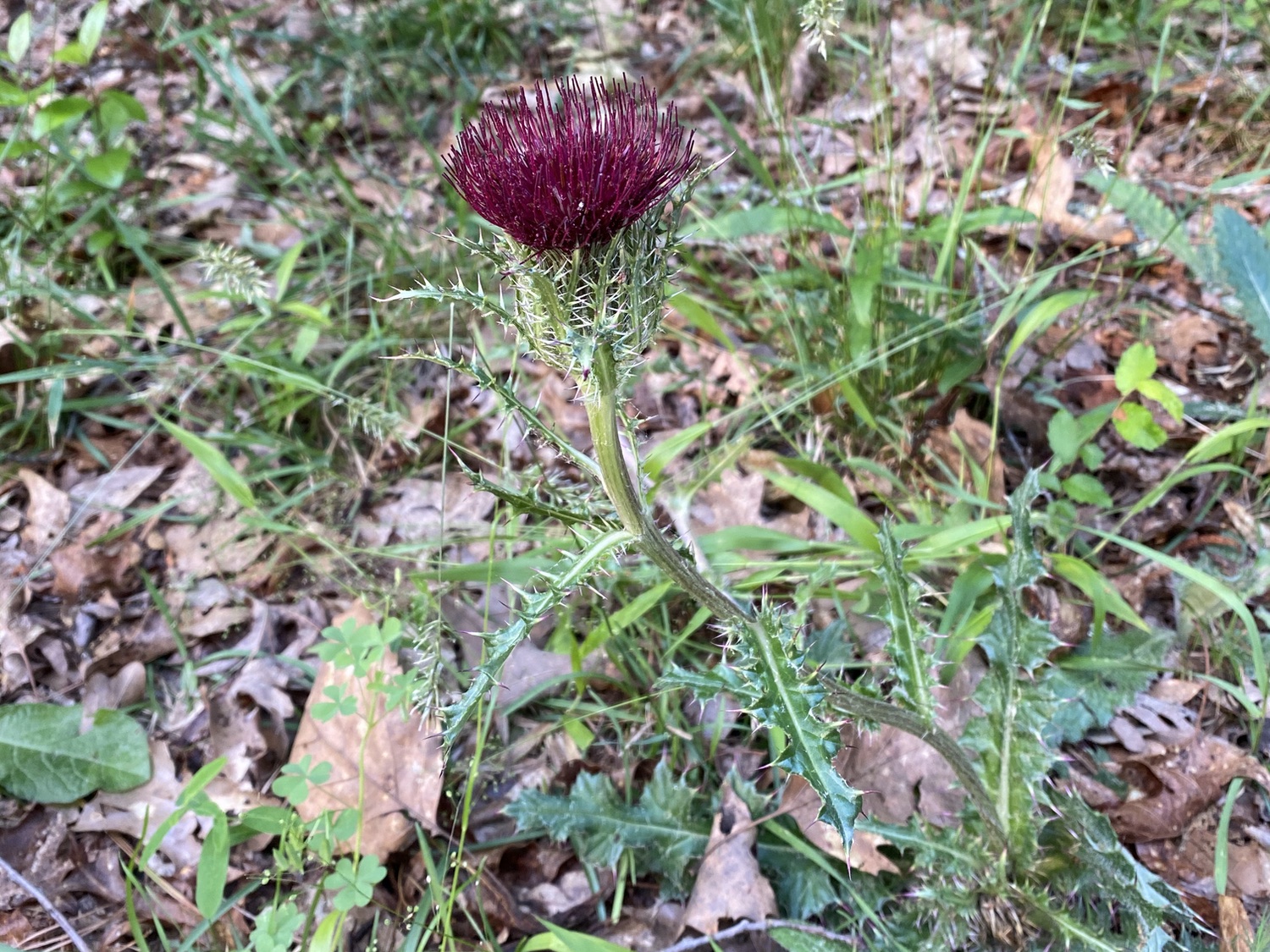
Southern Black Haw (Viburnum rufidulum). Although this can apparently grow up to 18 feet tall (!), this plant was only about a foot tall, growing alongside the road a few houses up from ours.
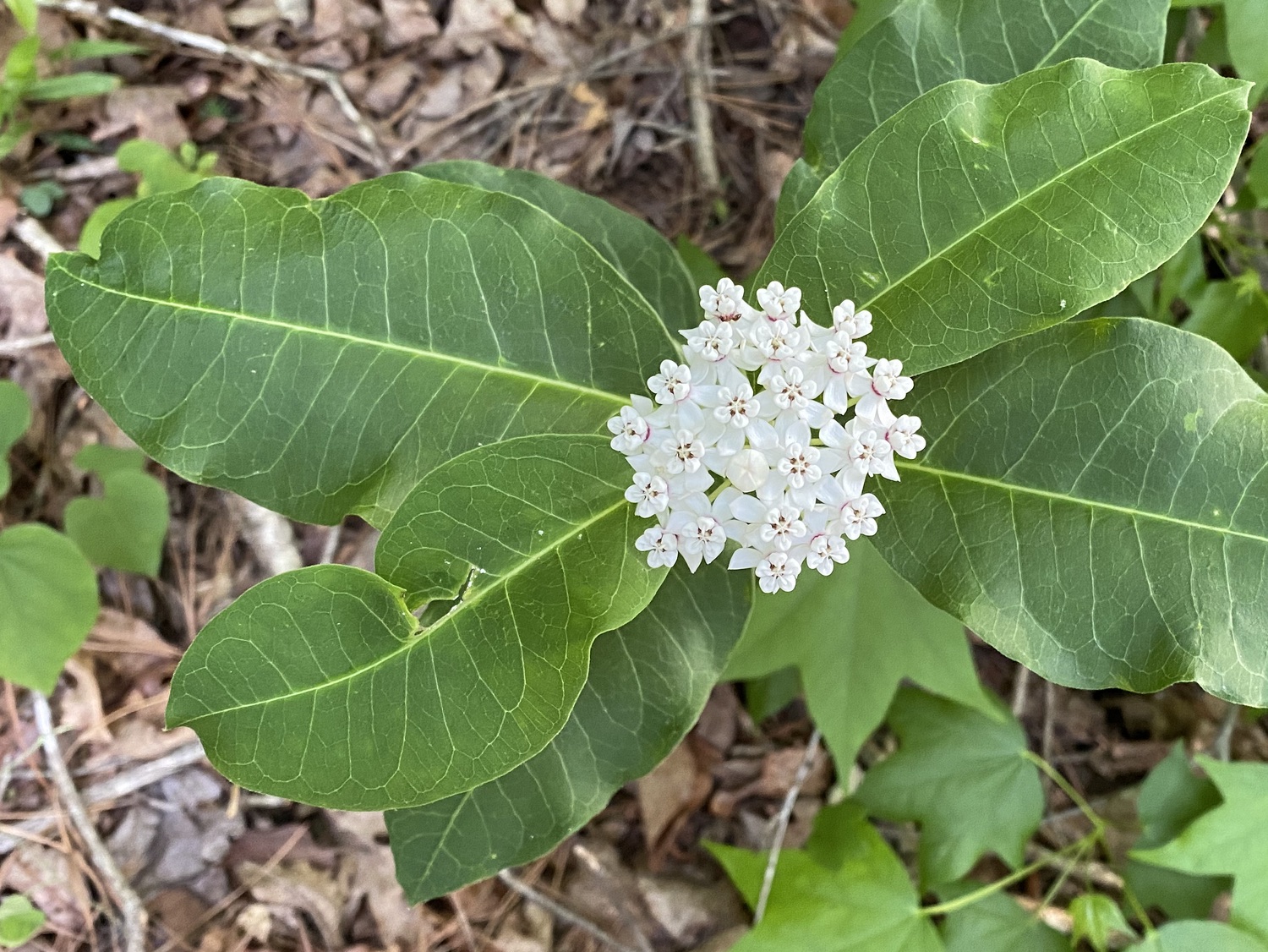
Smooth Spiderwort (Tradescantia ohiensis). These were growing along the White Trail in the UGA Botanical Gardens, between the power lines and the road.
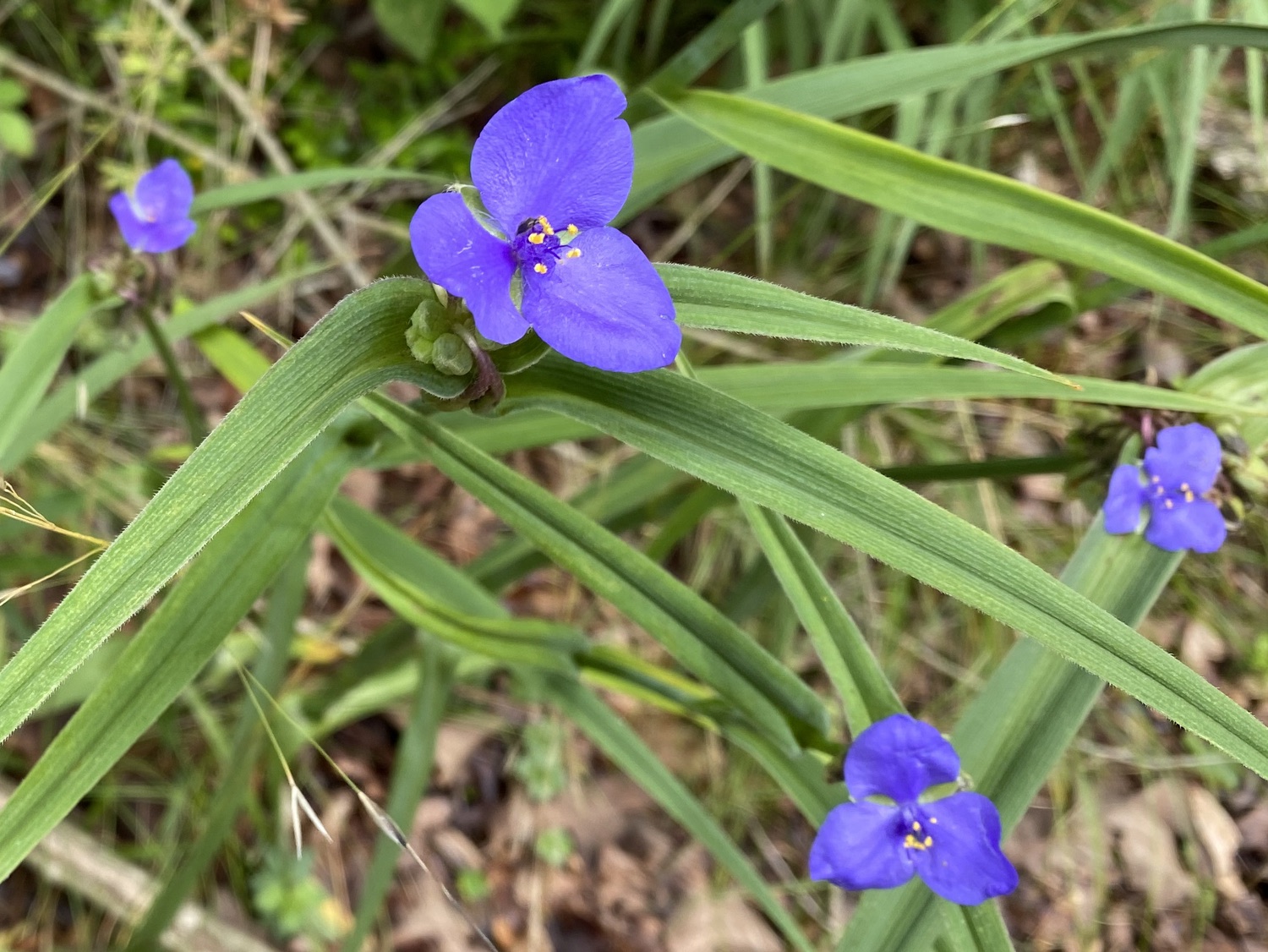
Rough Daisy Fleabane (Erigeron strigosus, also called Daisy Fleabane, although that can also refer to Erigeron annuus, which is also known as Annual Fleabane. Confusing. Don’t blame me.). This has sparse and very narrow alternating leaves, which distinguishes it from E. annuus. The stem is long and ridged; the plant is often 3' tall. The top photo is of one growing in a meadowy open area along the Blue Trail in the UGA Botanical Gardens, and the second photo is from a dry roadside near Maxeys.
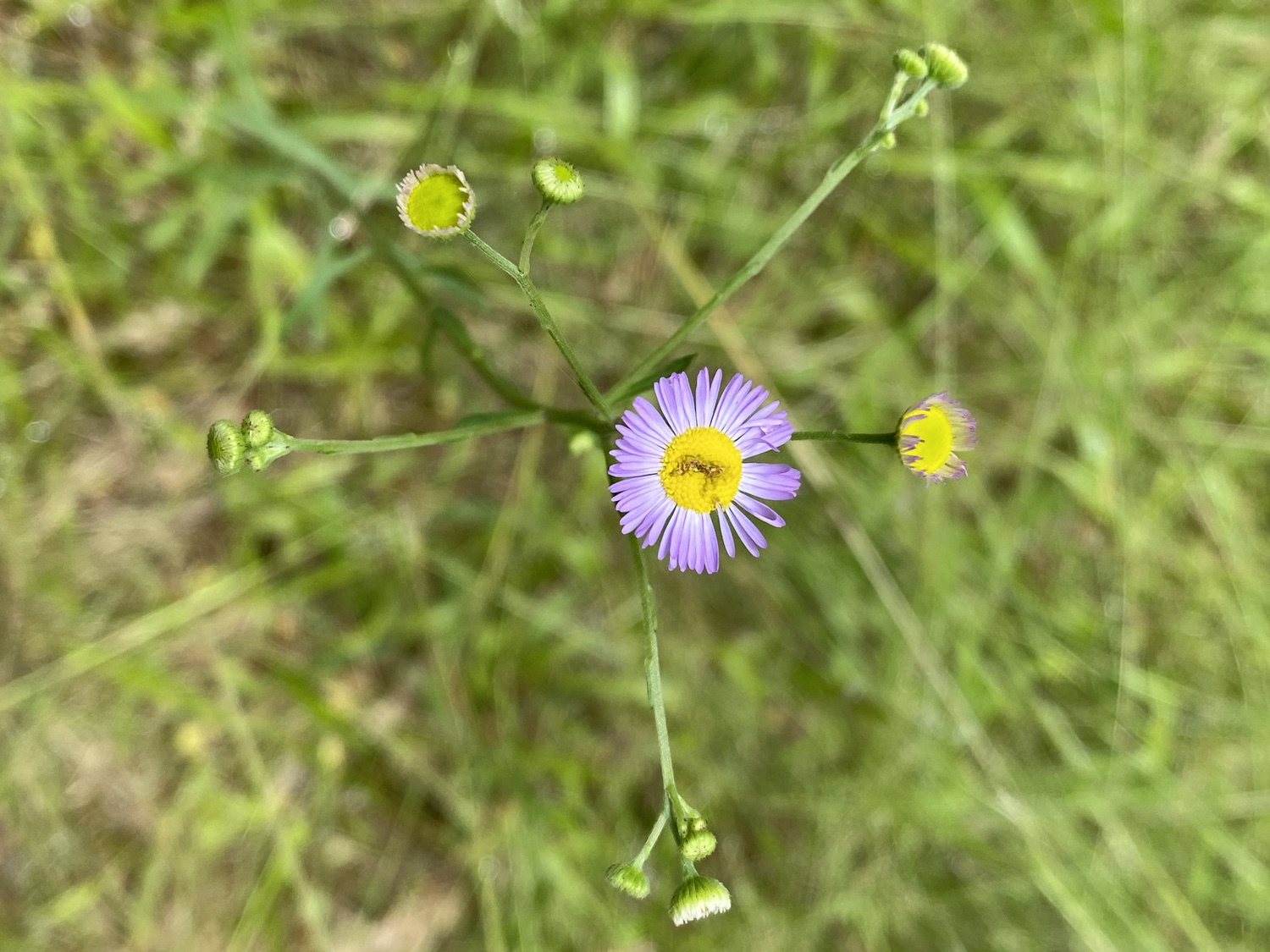
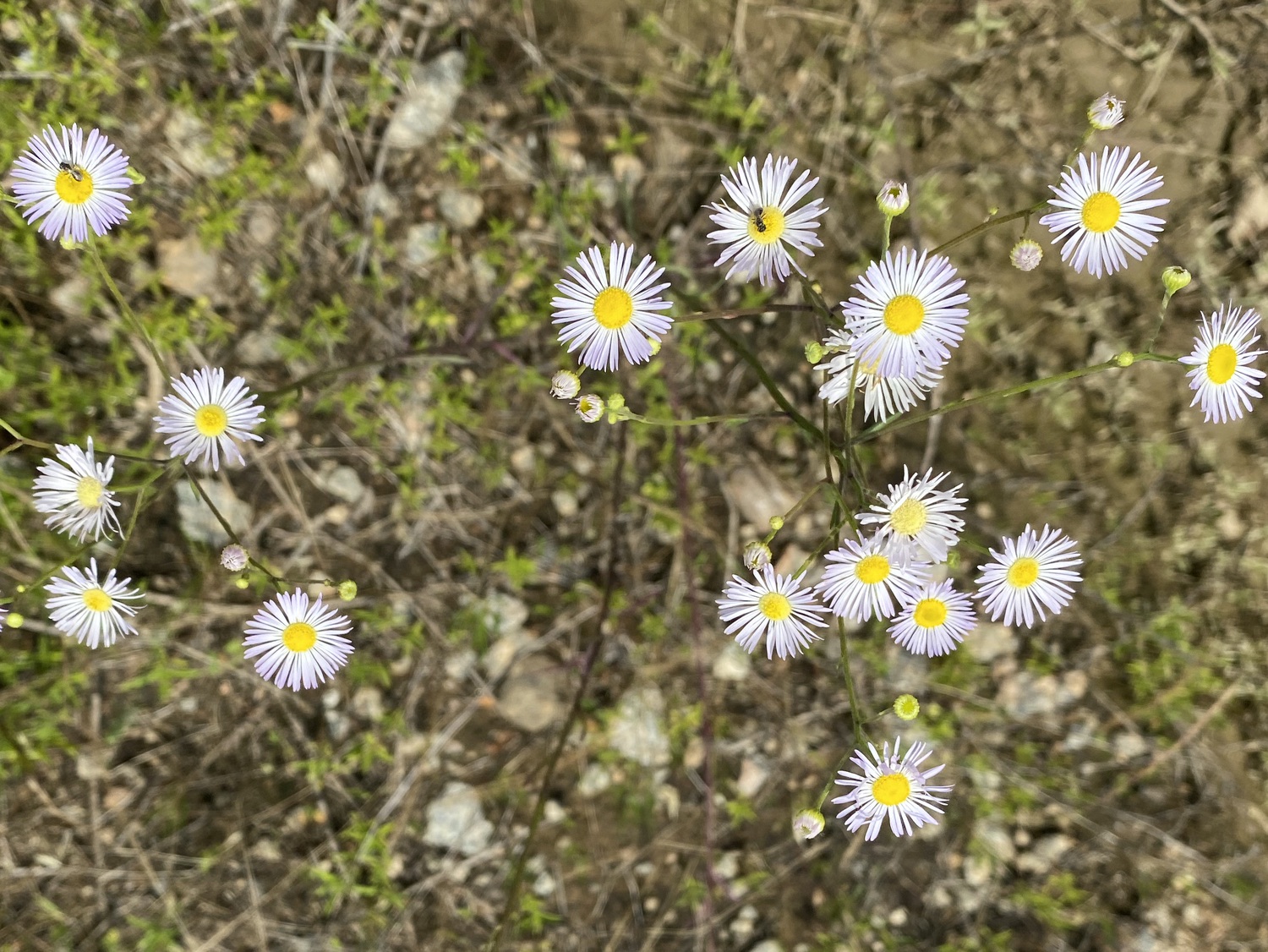
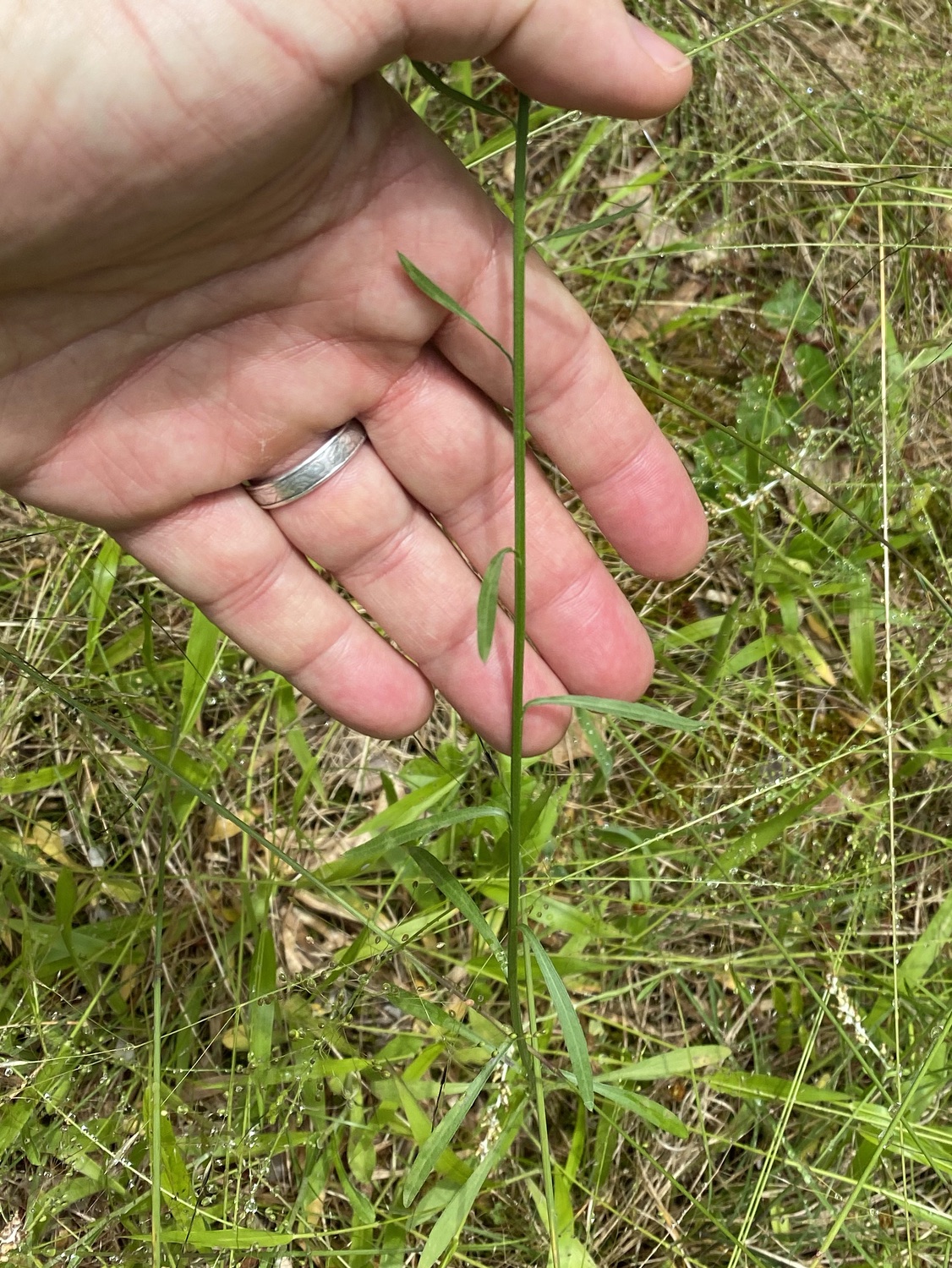
Highbush Blackberry (Rubus pensilvanicus, a synonym of Rubus argutus and also called Sawtooth Blackberry). These were blooming in April and early May, but the blooms have passed and they are now fruiting. These brambles come up in many places, but they are dense where the power lines cross our street.
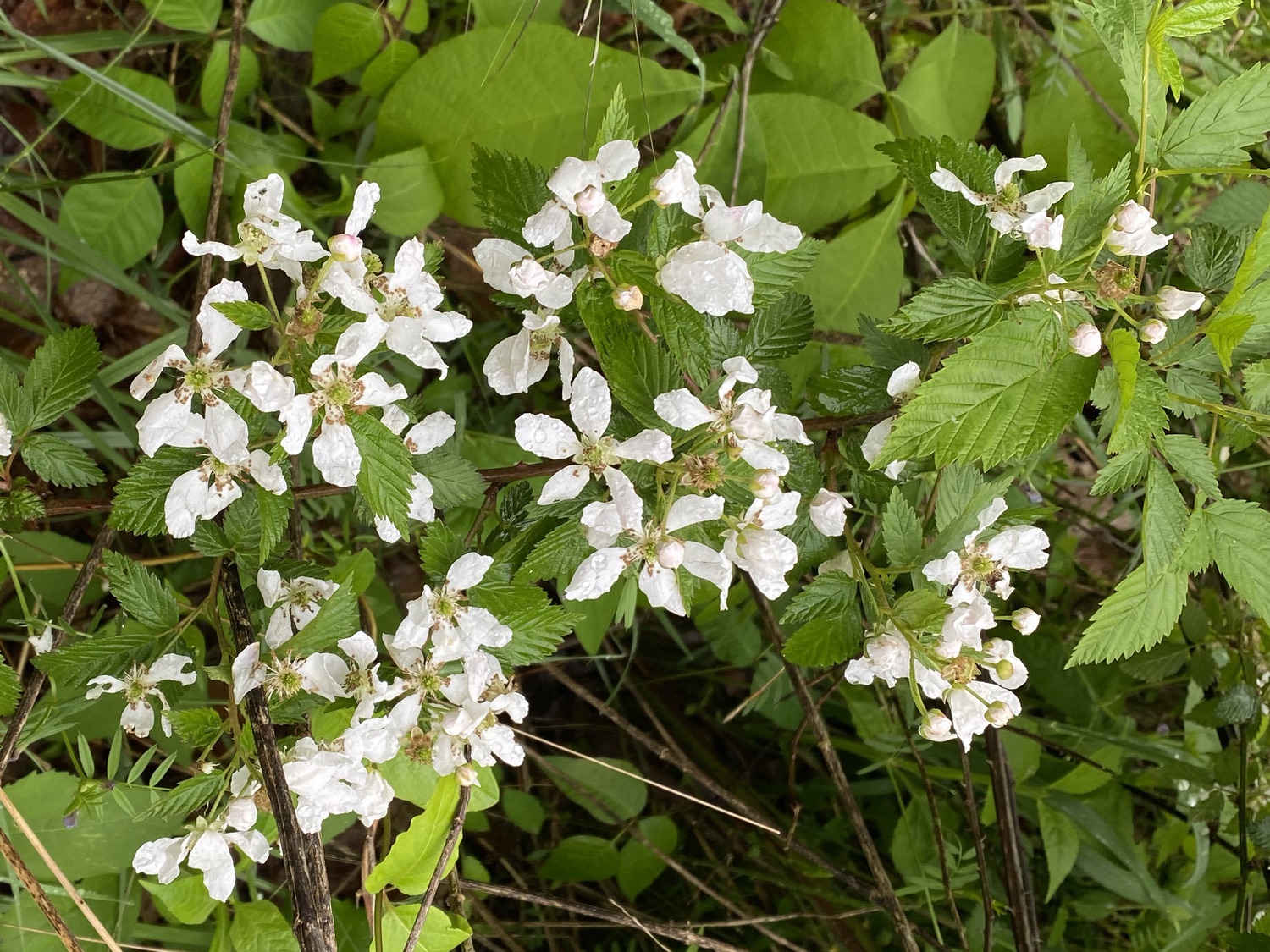
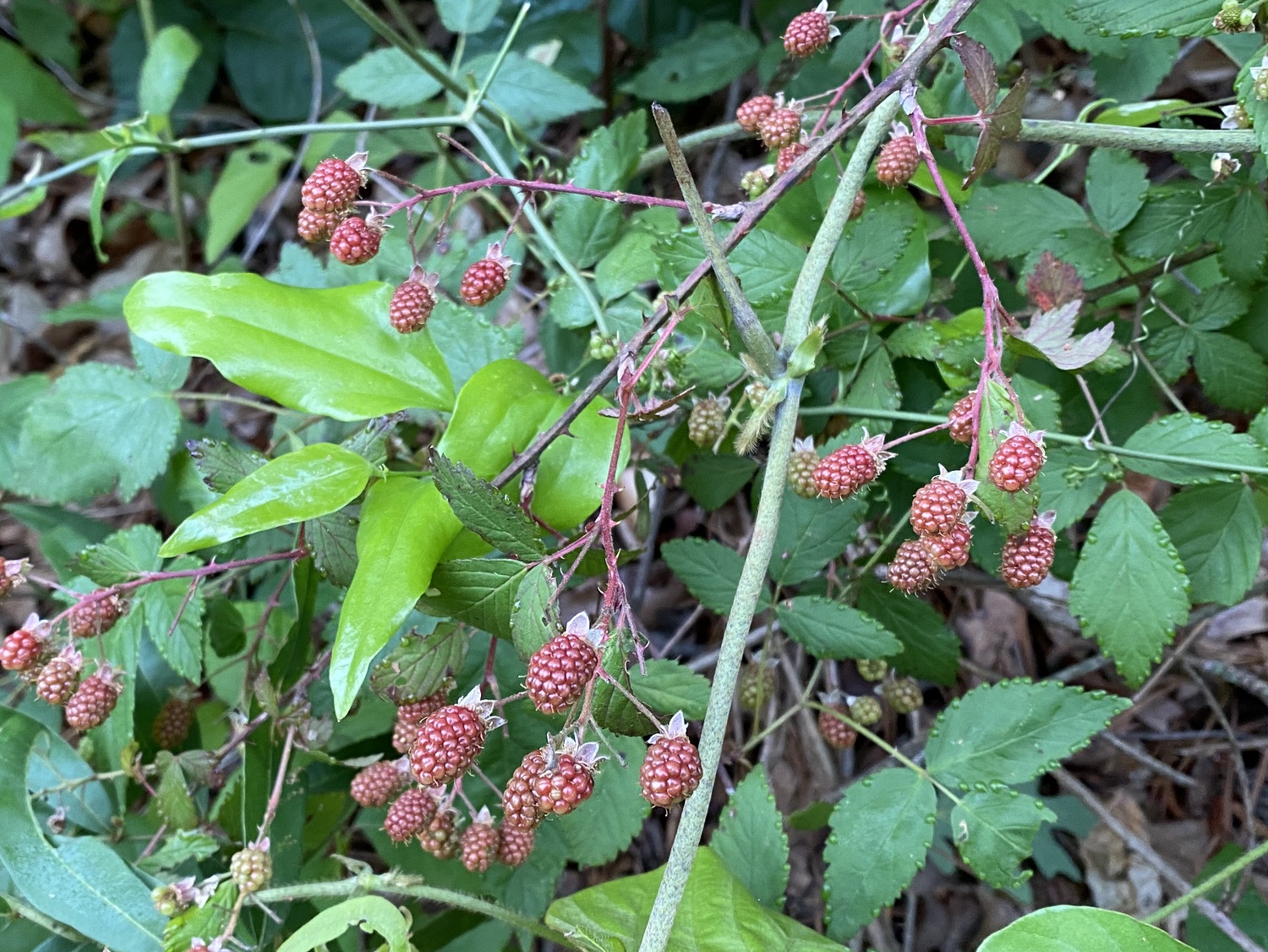
Between Crawford and Maxeys
I took a drive along Georgia 77 between Crawford and Maxeys on 3 May and on 22 May. On the earlier trip, the roadside was covered with large swaths of yellow, white, lavender, purple, and blue flowers. On the later trip, grasses had taken over and the county had mowed, so flowers were sparse.
Toad-Flax (Nuttallanthus canadensis).
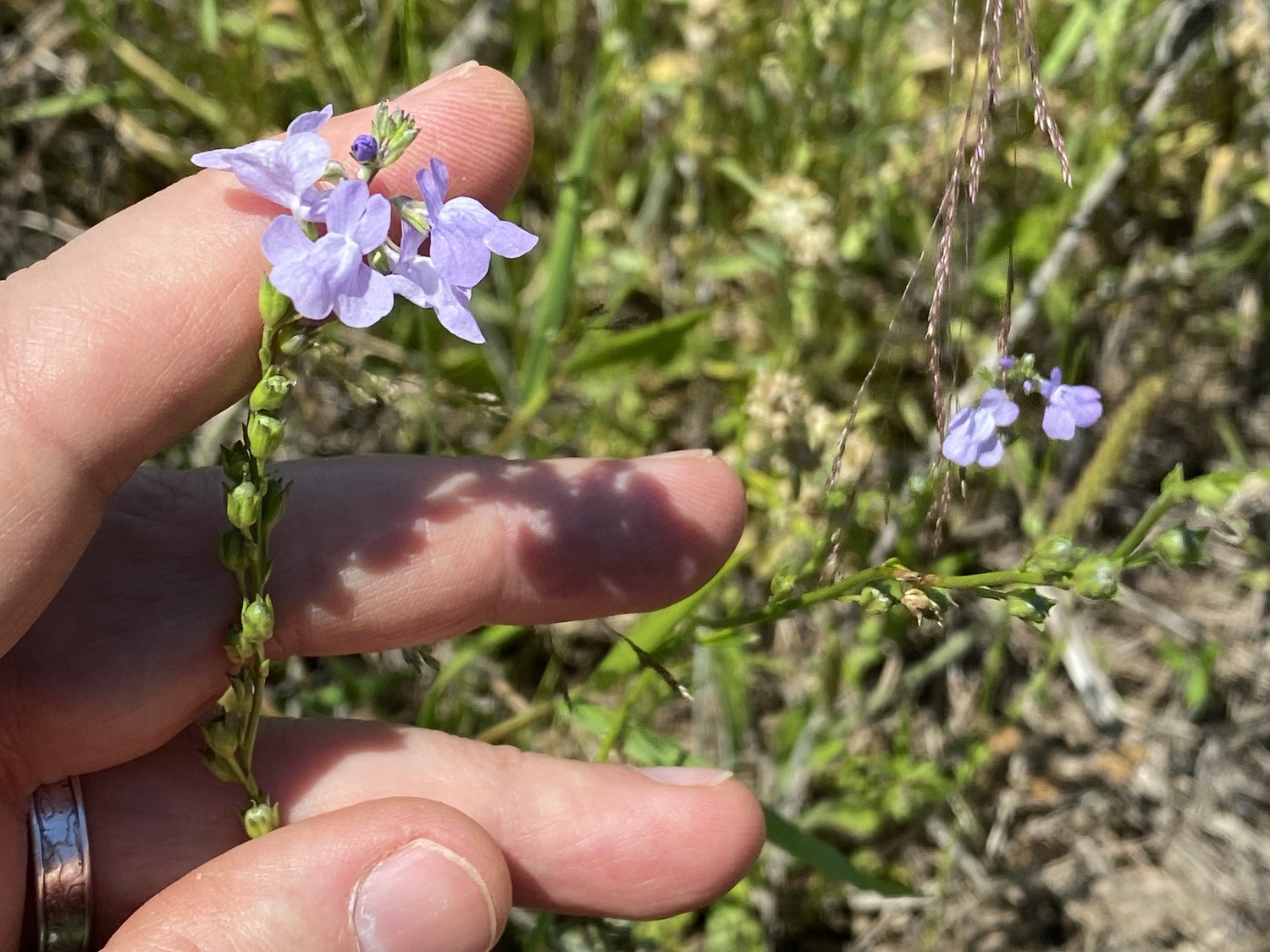
Southern Beard-Tongue (Penstemon australis). These are lavender-pink, tube-shaped flowers, and the "beard tongue" is a protruding yellowish and hairy sterile stamen.
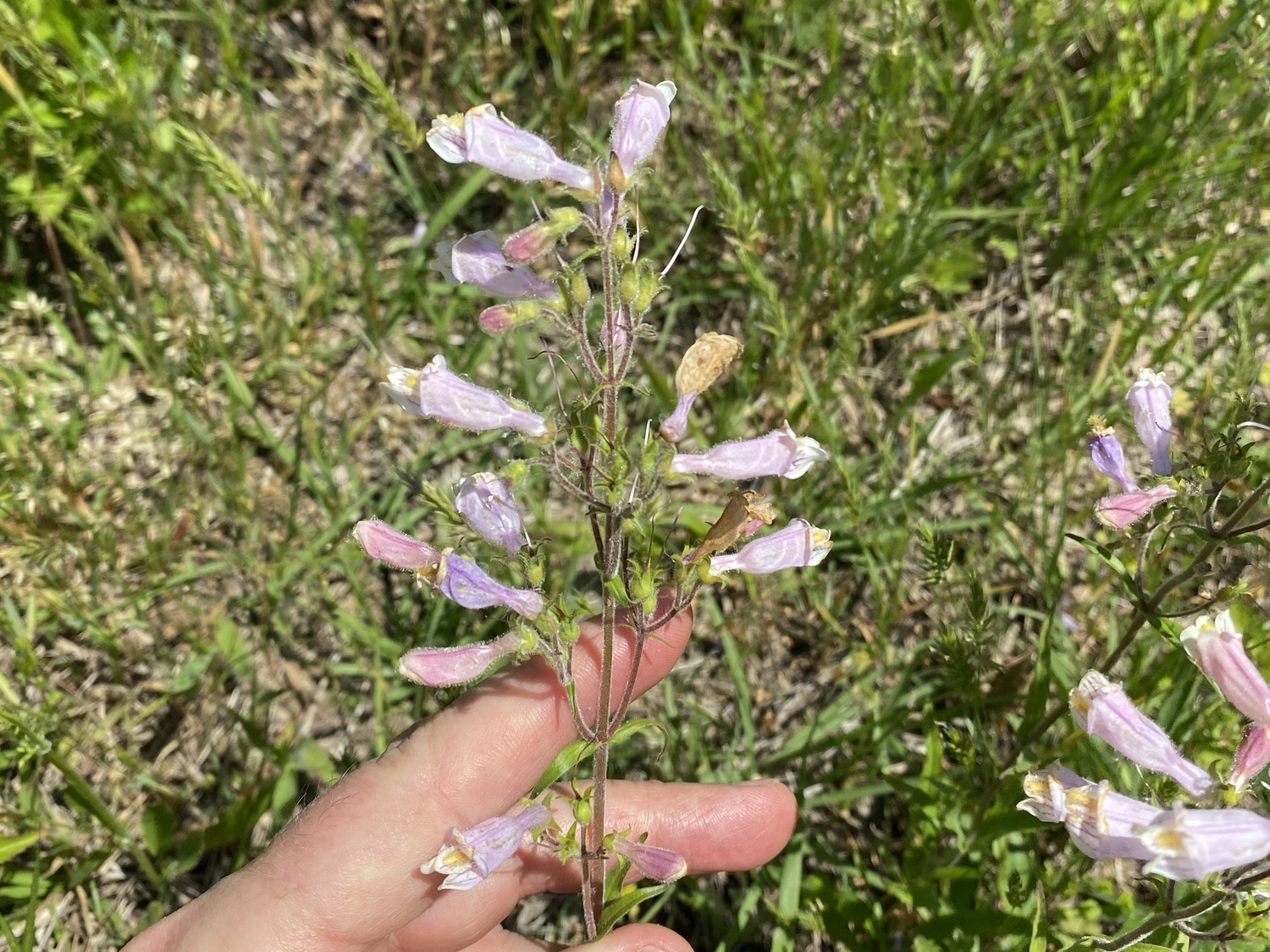
Small’s Ragwort (Packera anonyma). These were common in our neighborhood early in the month, but seem to be fading fast. The purple flower in the upper left is Brazilian Verbena.
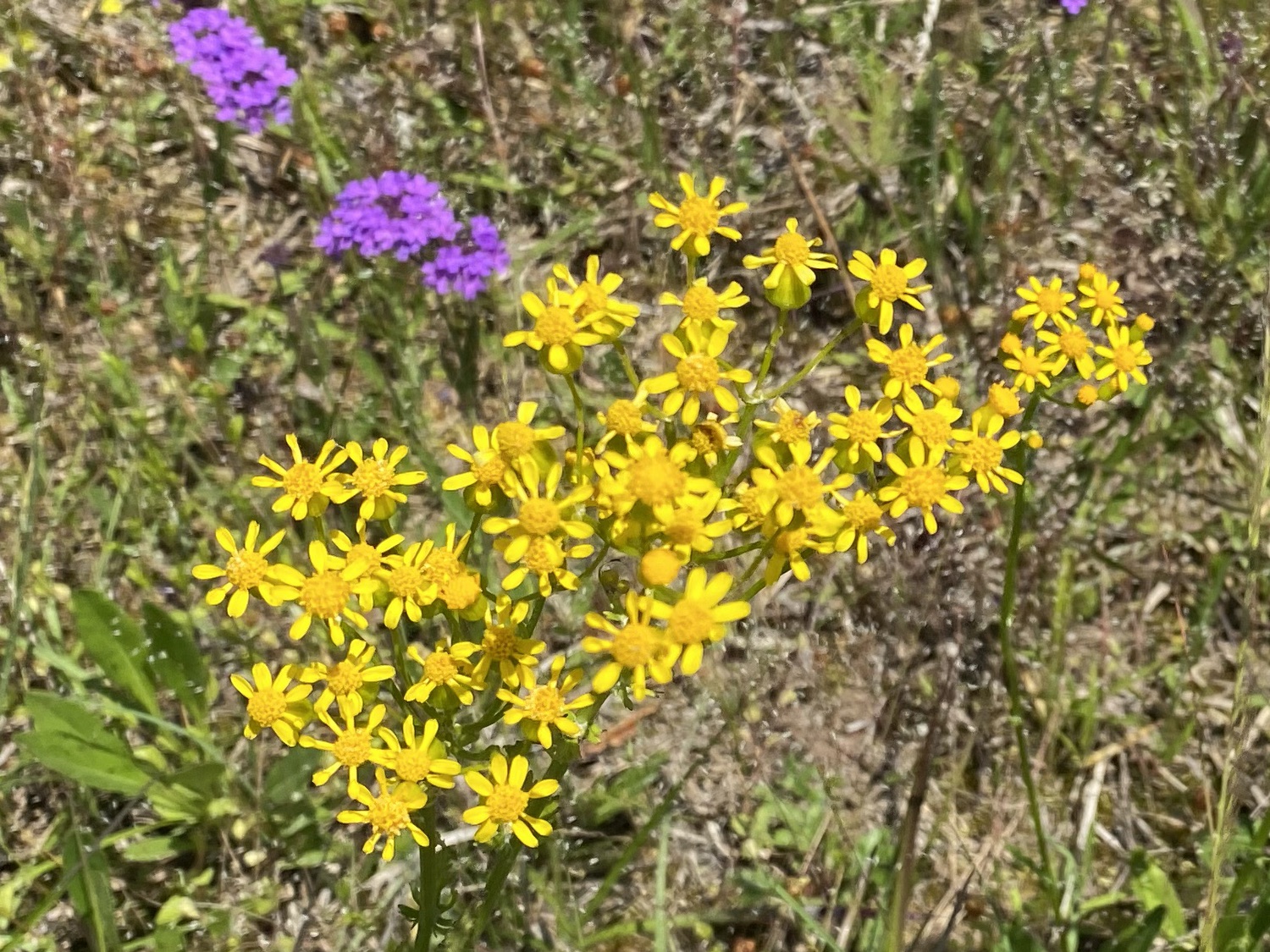
Ox-Eye Daisy (Leucanthemum vulgare). These also grow in our neighborhood (bottom photo). These are naturalized, being native to Europe and Asia.
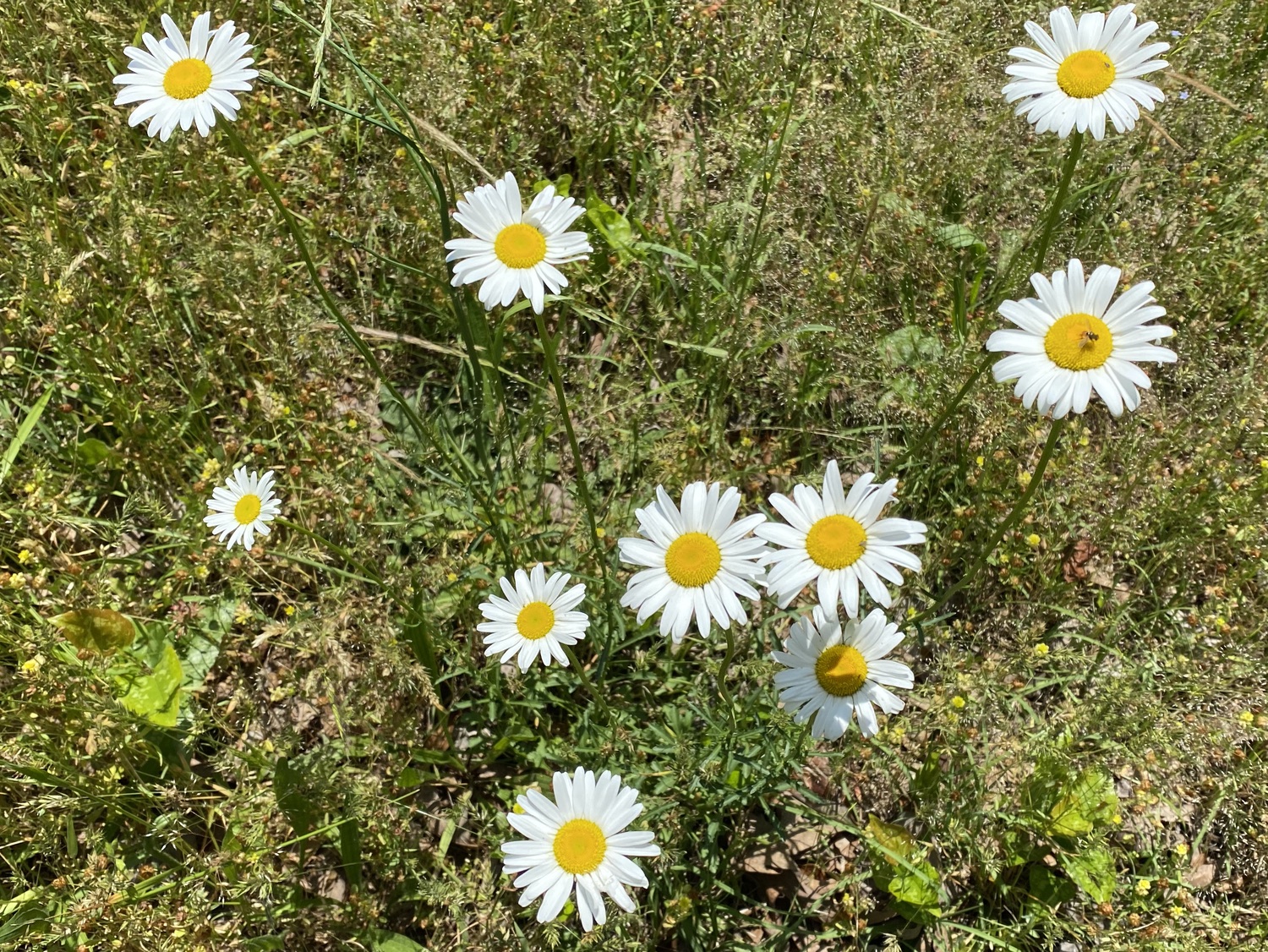
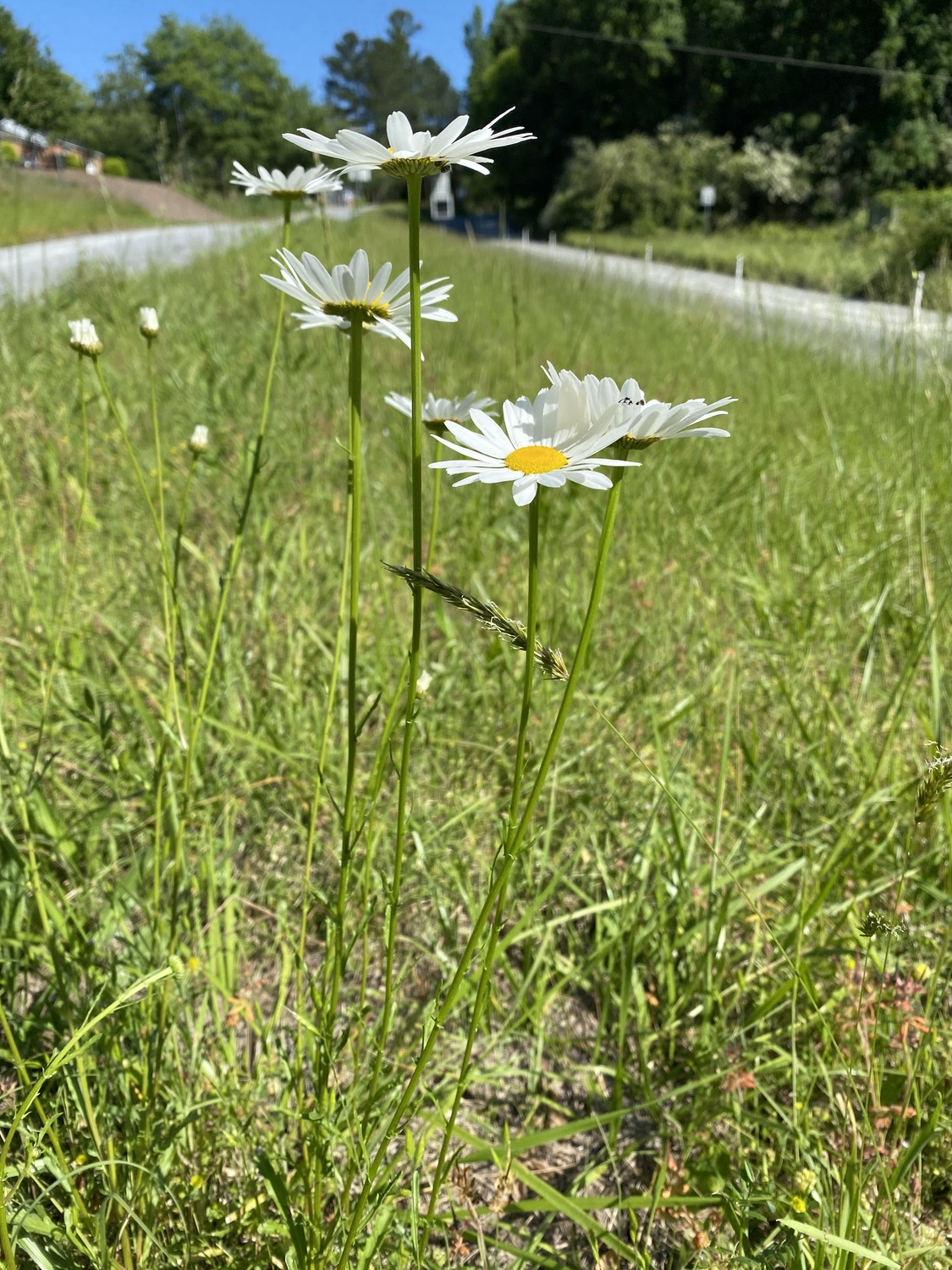
Cornflower (Centaurea cyanus, also called Bachelor’s Buttons)
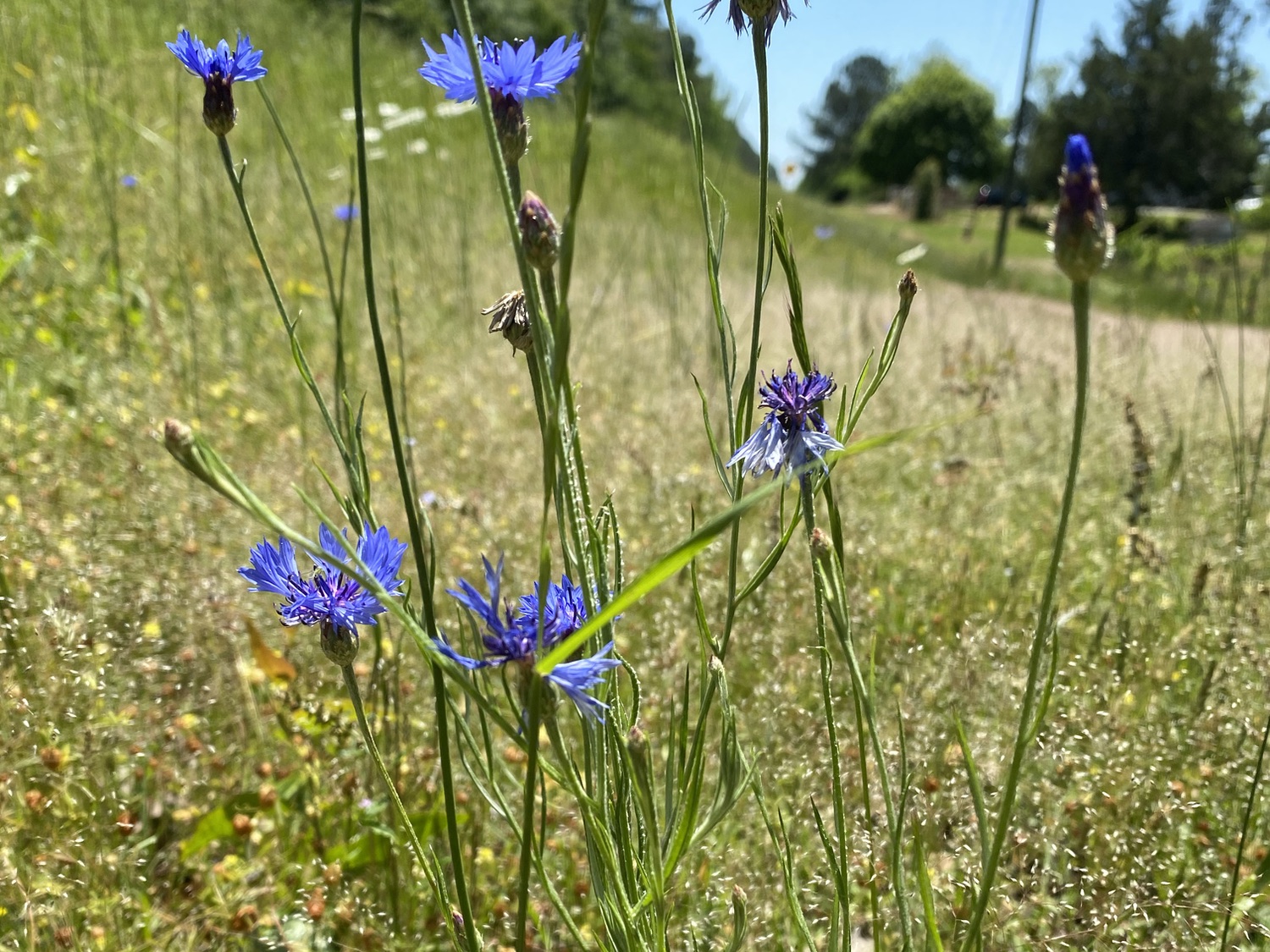
Brazilian Verbena (Verbena brasiliensis, also called Brazilian Vervain). These were tricky to identify, being one of those cases where the photos in the books don’t quite match what you see. It has opposite toothed leaves, and each flower is on a short stalk radiating from a central cluster. This is an invasive native to South America. I also recently found it growing along our street (lower photo).
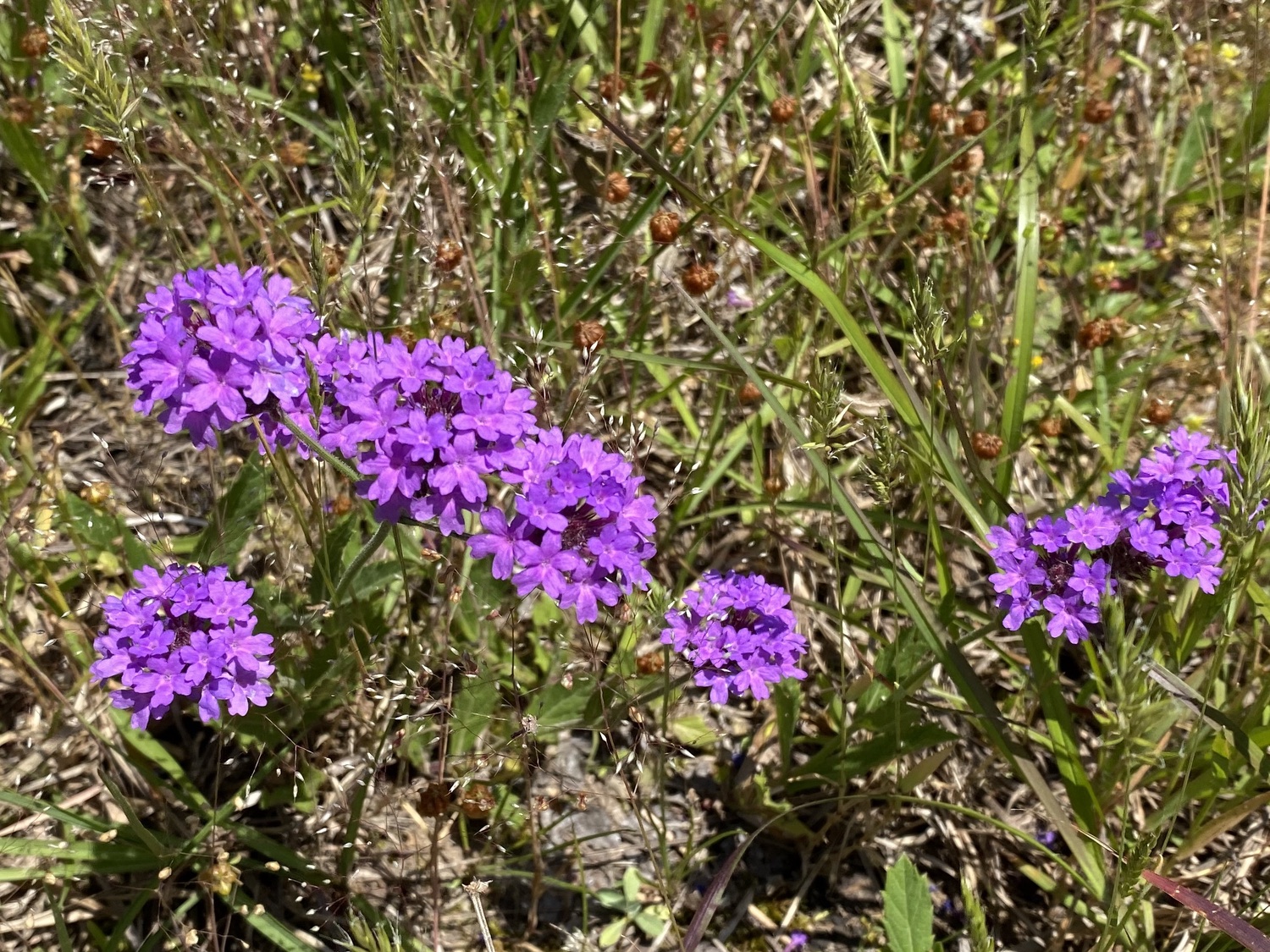
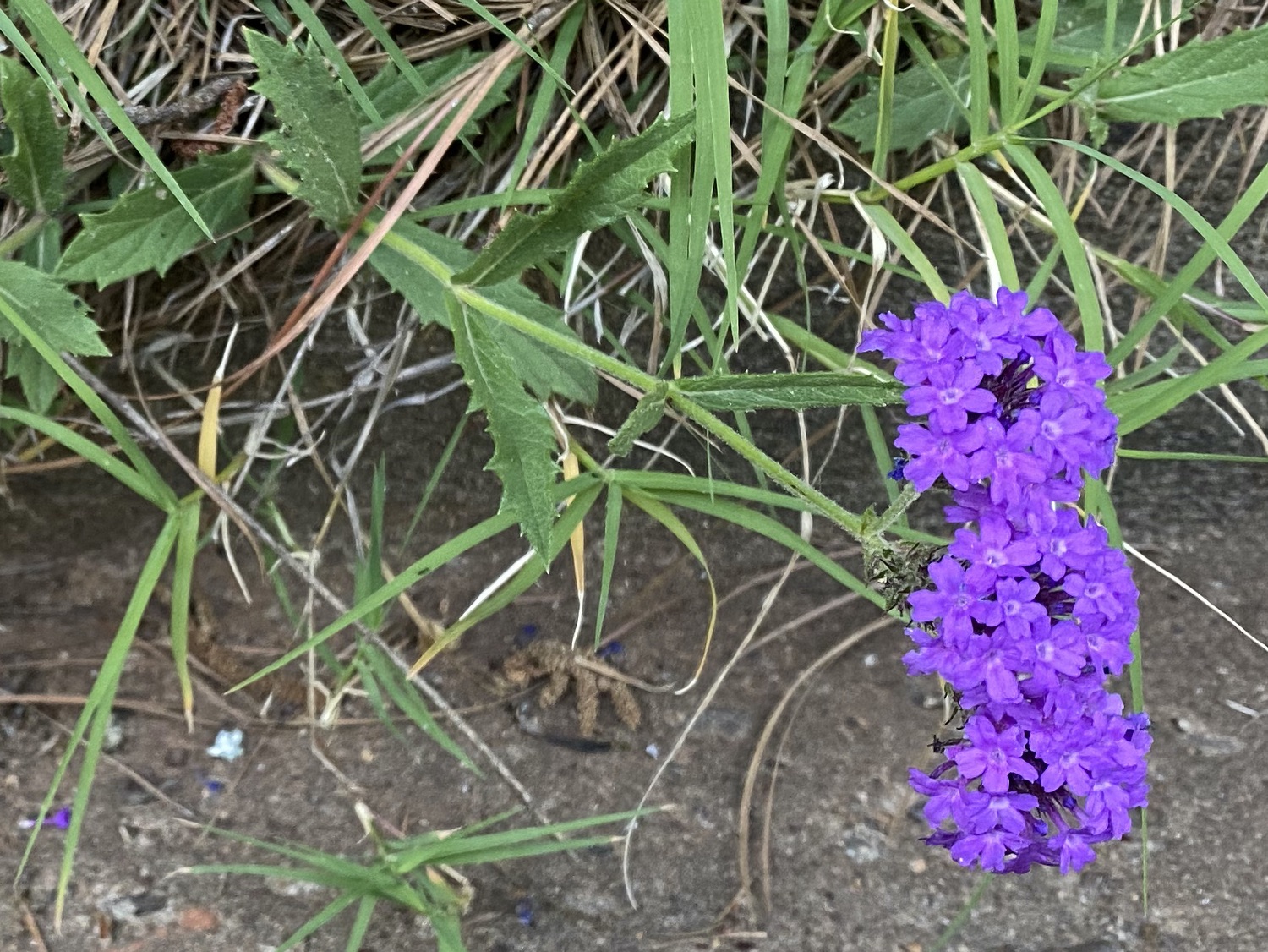
Wild Radish (Raphanus raphanistrum). This is an invasive plant, native to Europe.
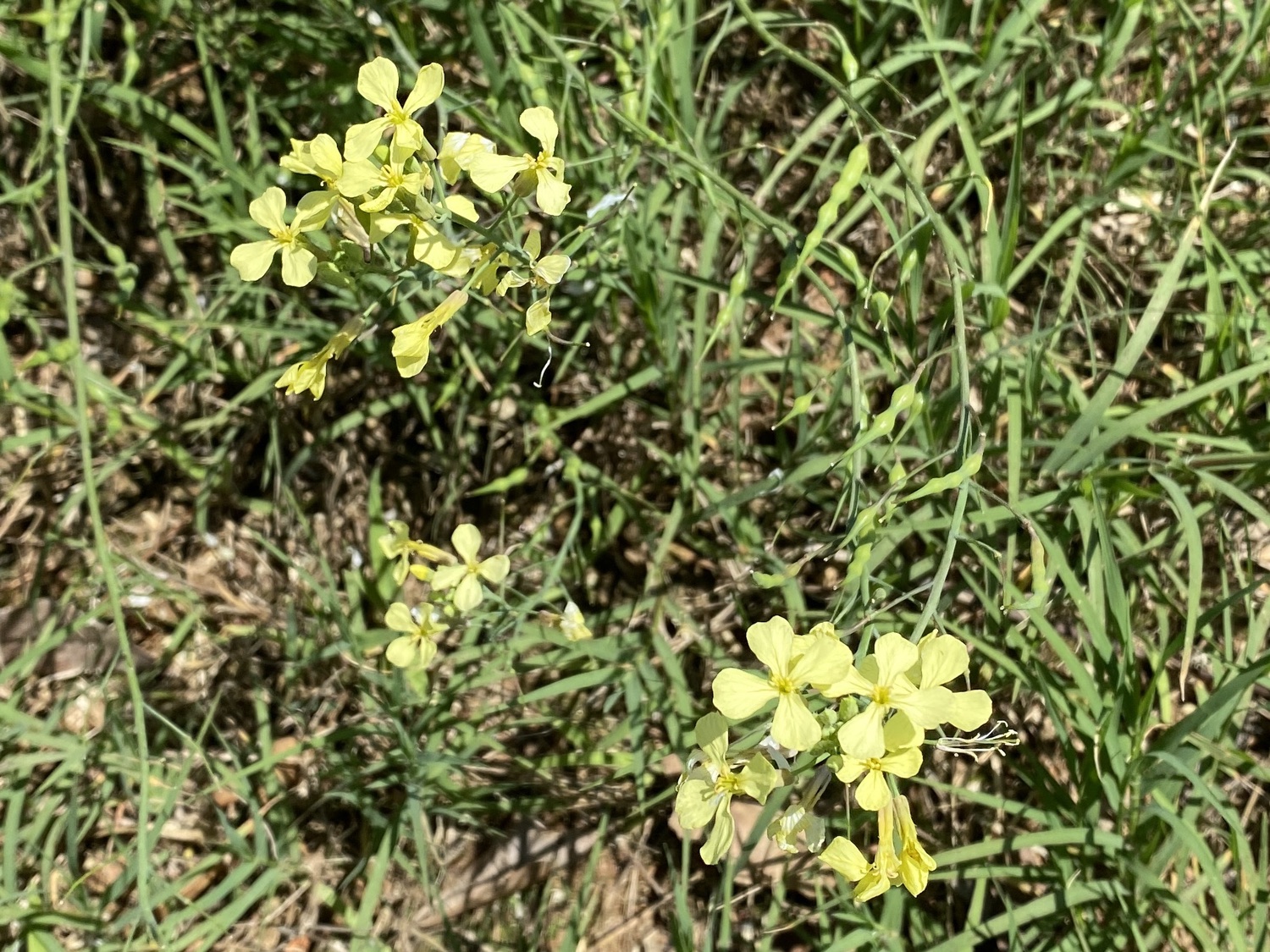
Large-flowered Coreopsis (Coreopsis grandiflora). This flower wasn’t present on my first trip in early May, but was fairly common in late May on the second trip. This is a Coreopsis, but it may be a different species than I list here
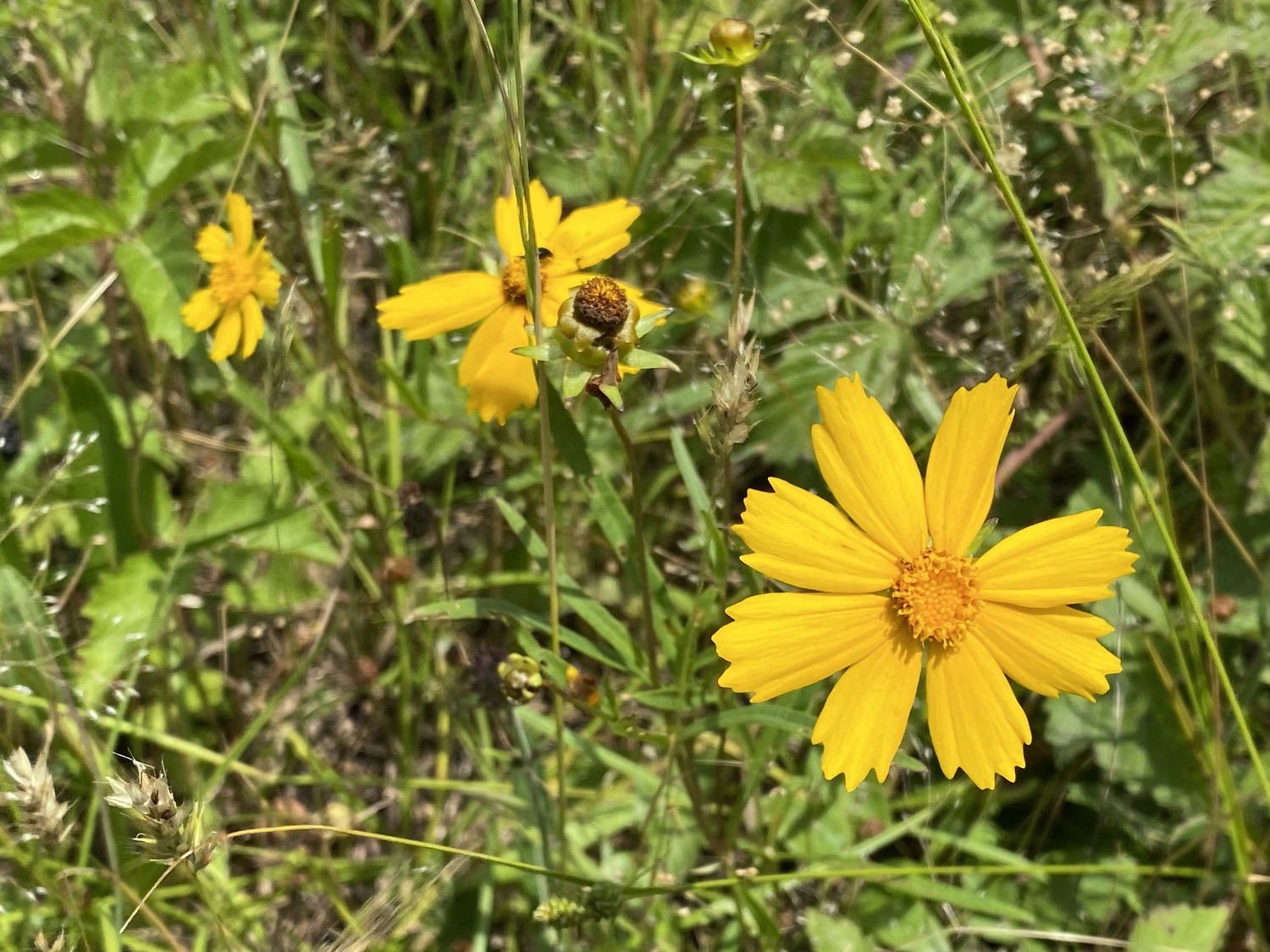
Scull Shoals
On 22 May, I also drove by Scull Shoals, between Watkinsville and Greensboro, and saw several flowers along a gravel forest road that I haven’t seen anywhere else. The field guide indicates that all of these species like dry woods and disturbed areas, which fits the habitat.
Carolina Vetch (Vicia caroliniana). This covered the shoulder of the road in a dense stand over 50' long.
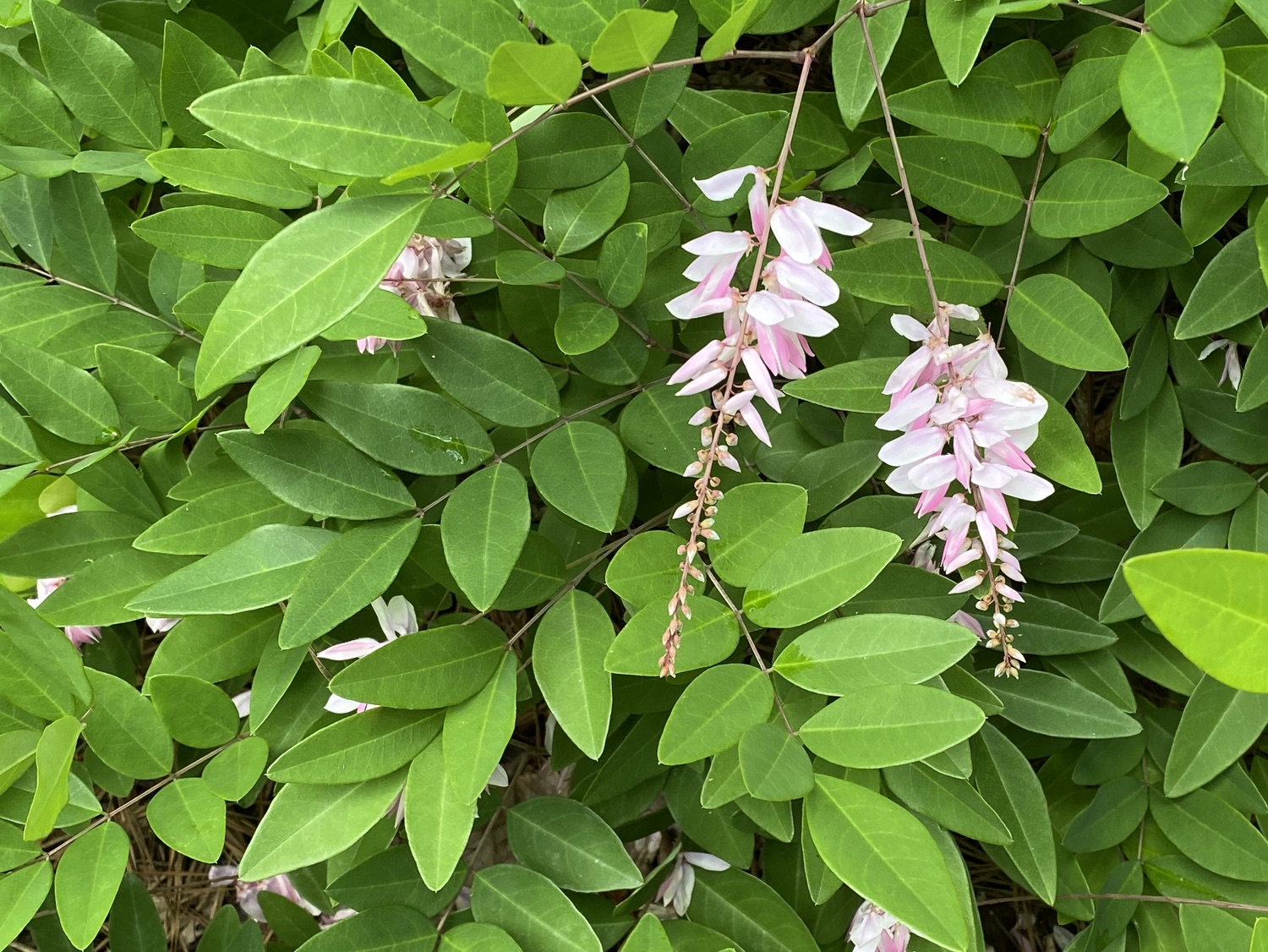
Helmet Skullcap (Scutellaria integrifolia). I had originally identified this as Blue Sage, based on the white stripes, but now see that the upward-deflected flowers and the overarching hood of the upper flower lip make tis a Helmet Skullcap. The stem is ridged and 4-angled, and the opposite leaves are elongated and oval.


Self-Heal (Prunella vulgaris, also called Heal-All)
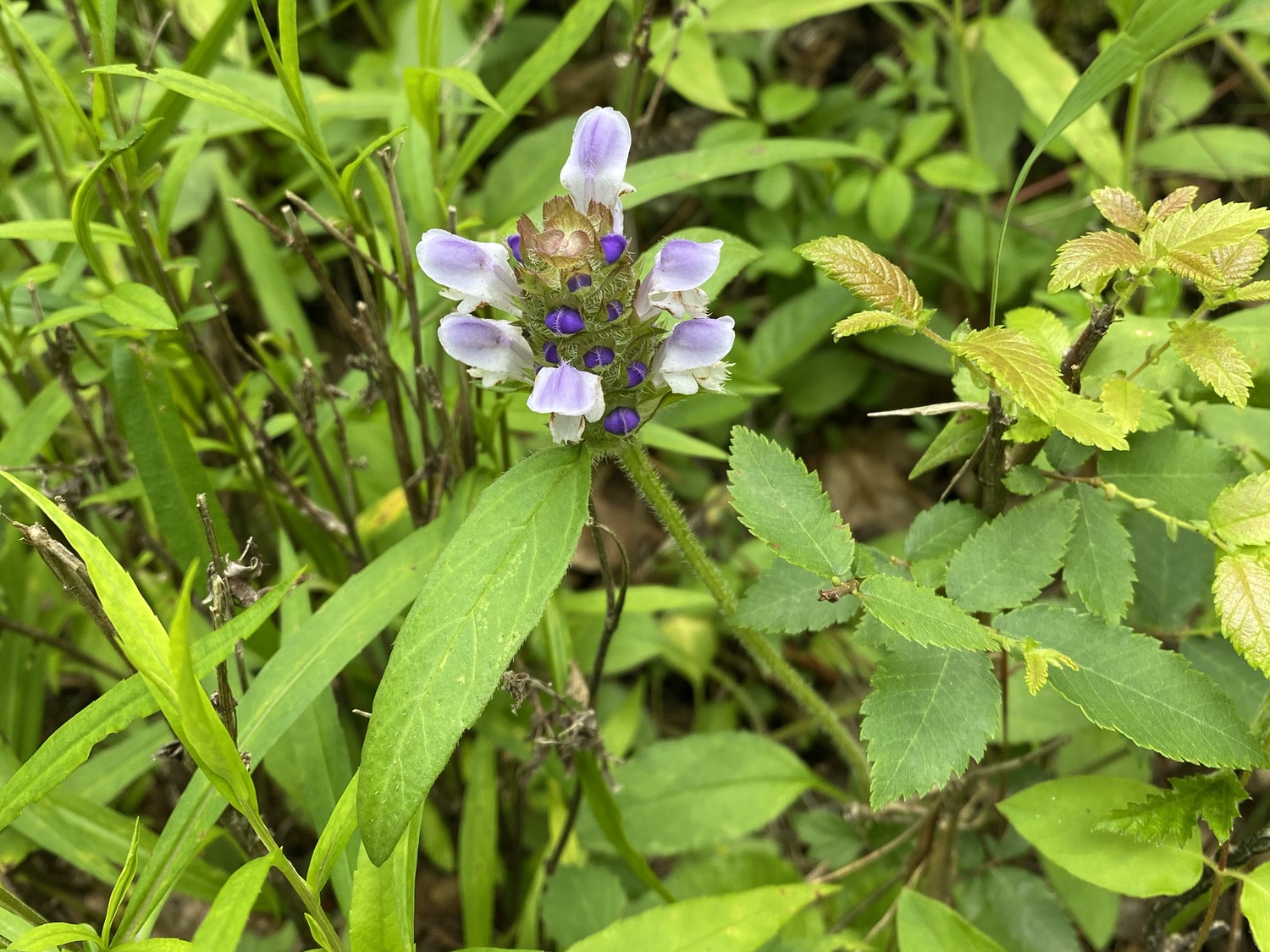
Sensitive Brier (Mimosa microphylla). These look like something straight out of Dr. Seuss.
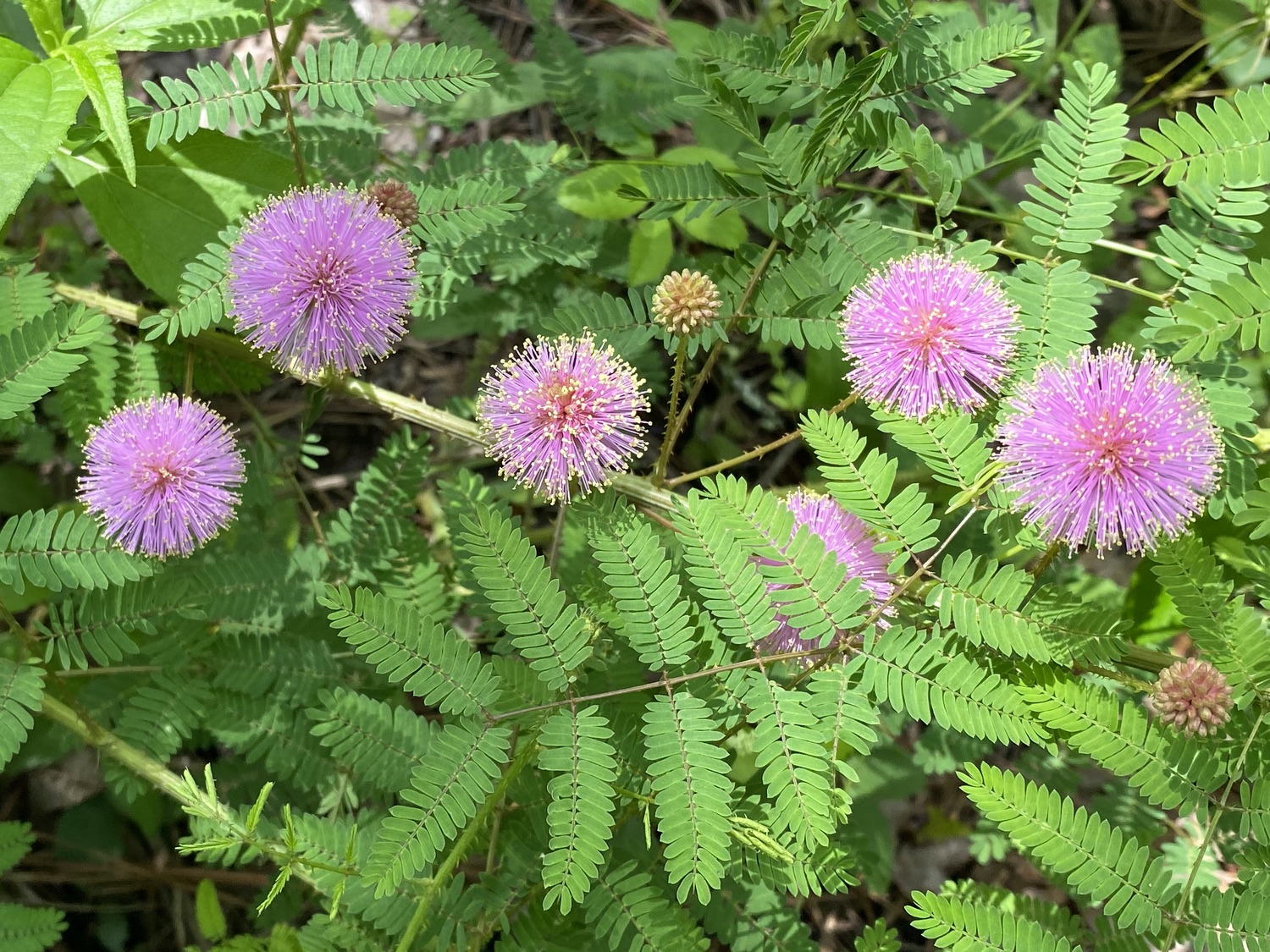
References
Chafin, L.G. 2016. Field Guide to the Wildflowers of Georgia and Surrounding States. The University of Georgia Press, Athens, Georgia.
Duncan, W.H., and M.B. Duncan. 1999. Wildflowers of the Eastern United States. The University of Georgia Press, Athens, Georgia.